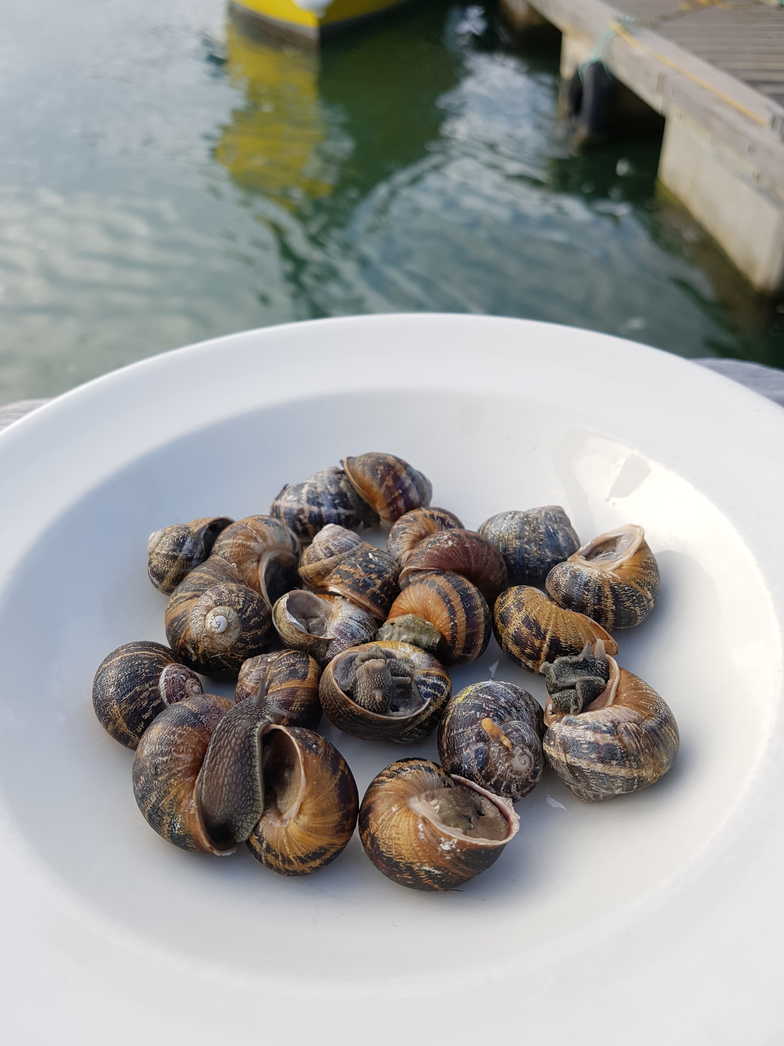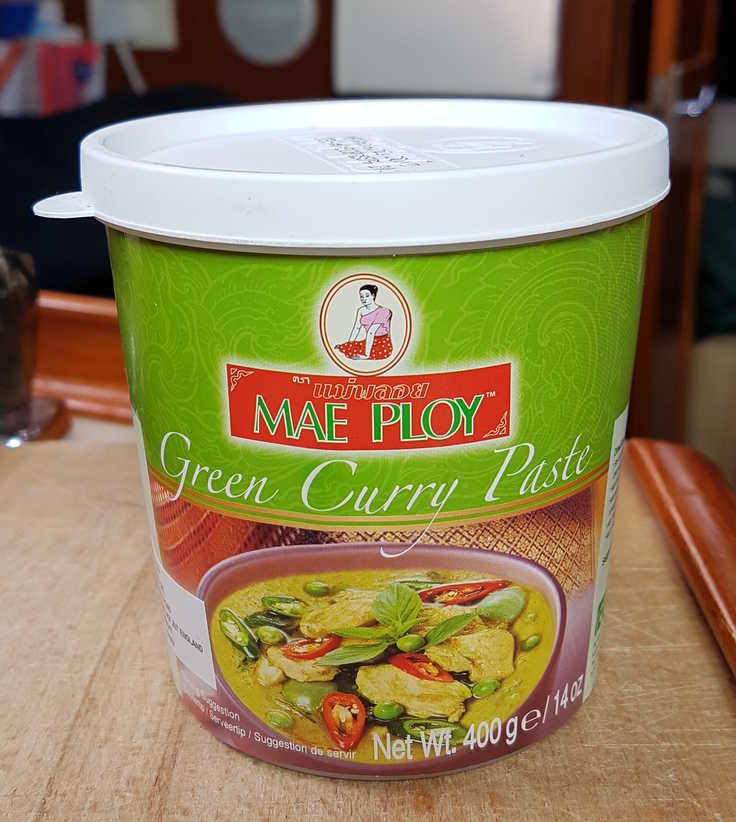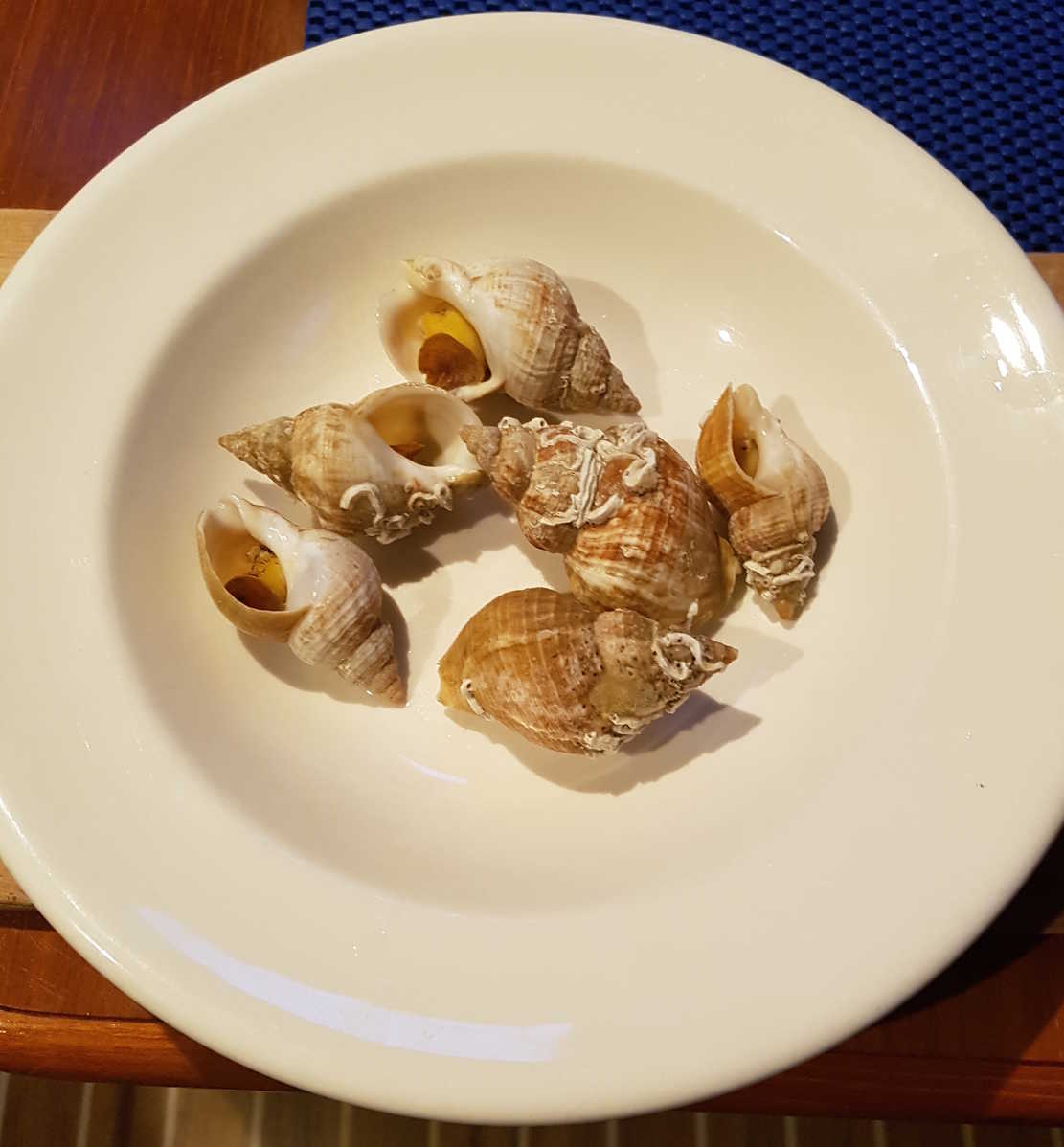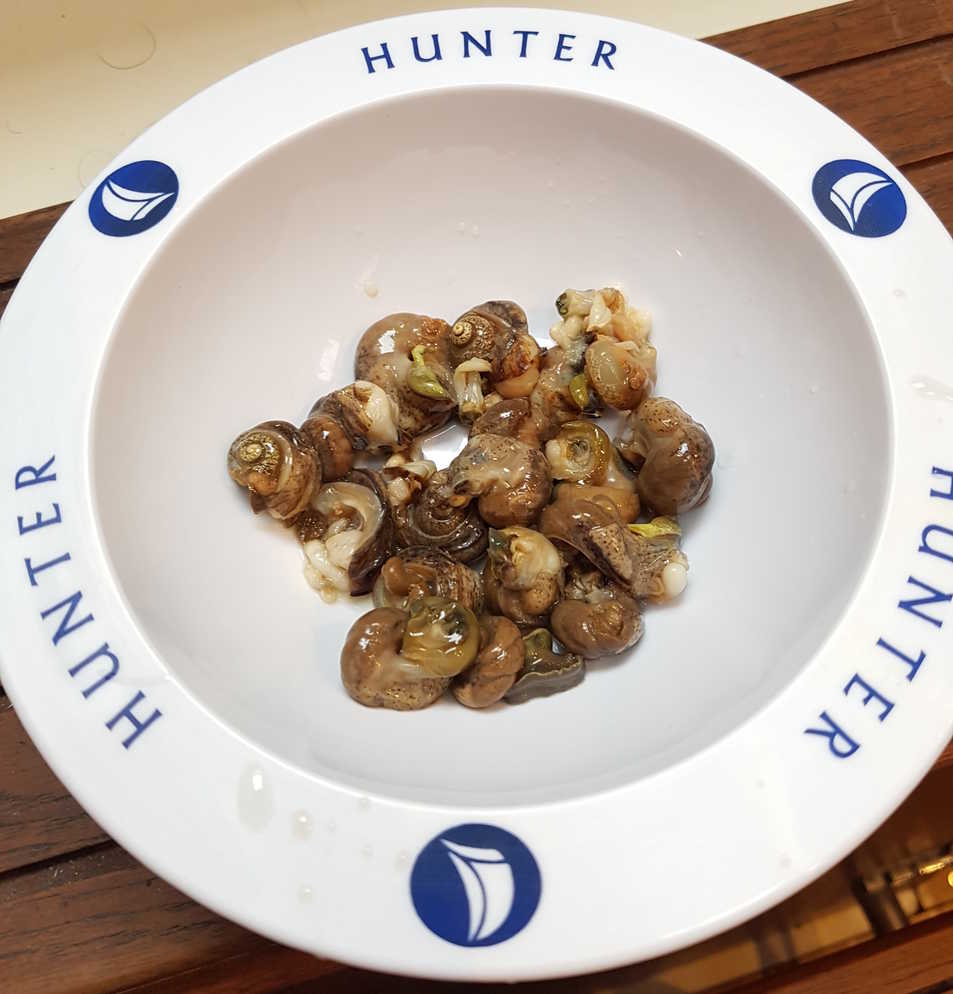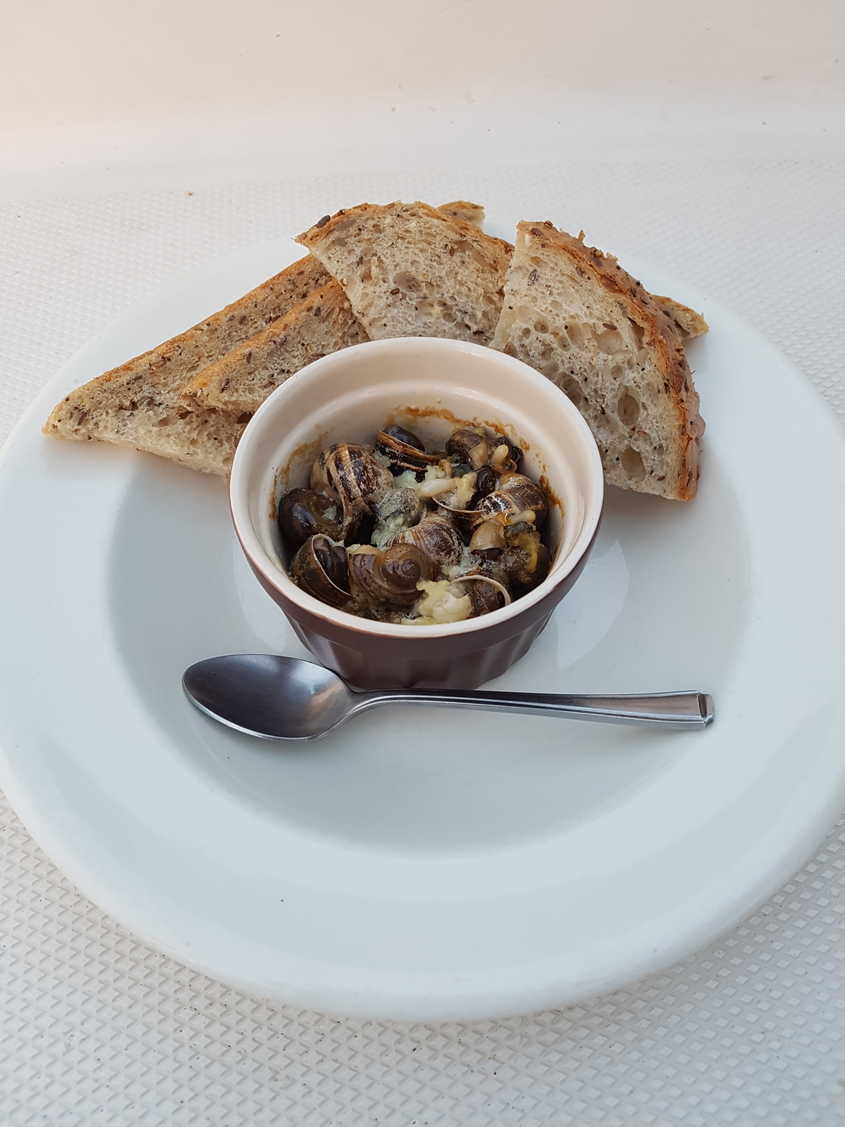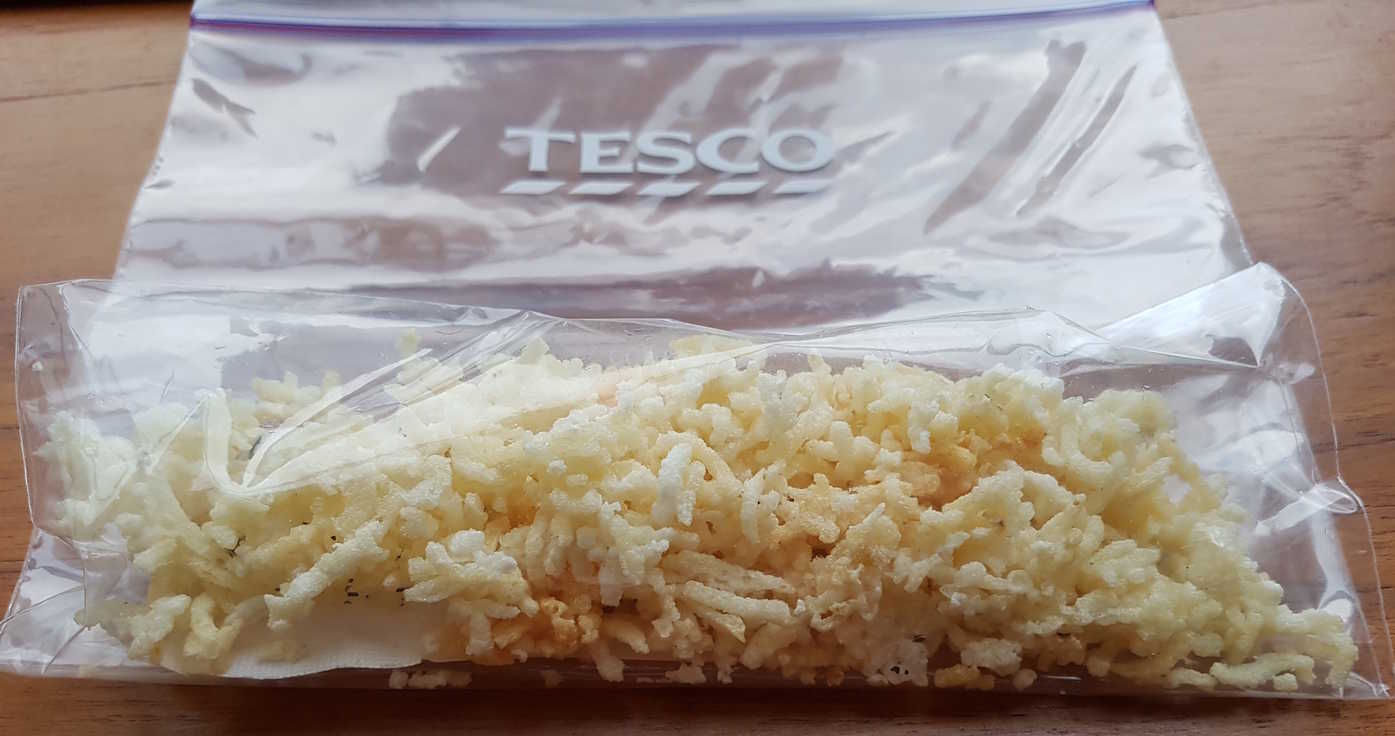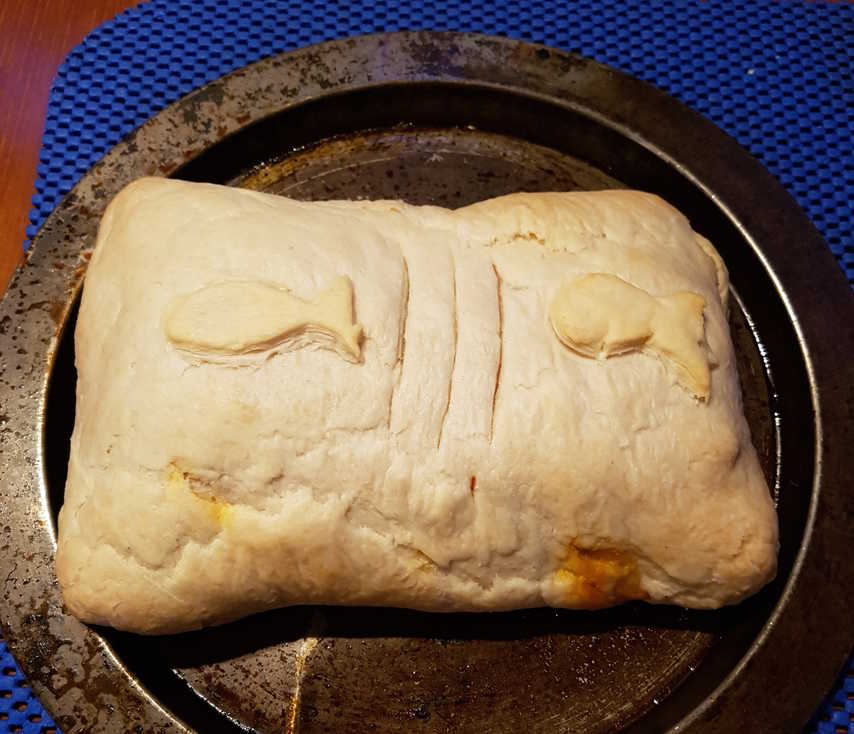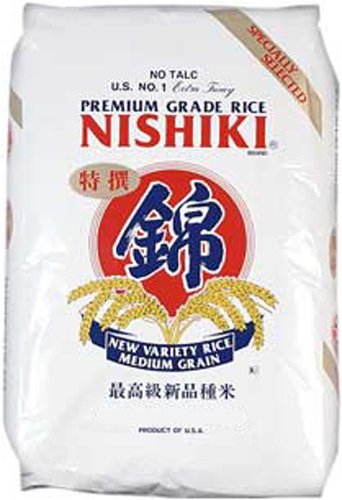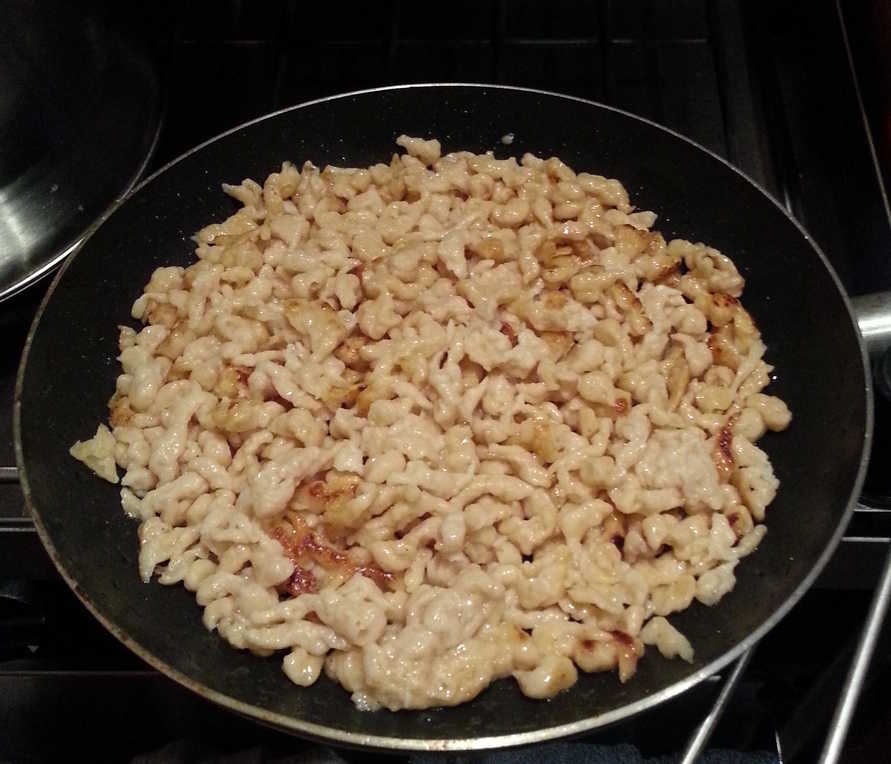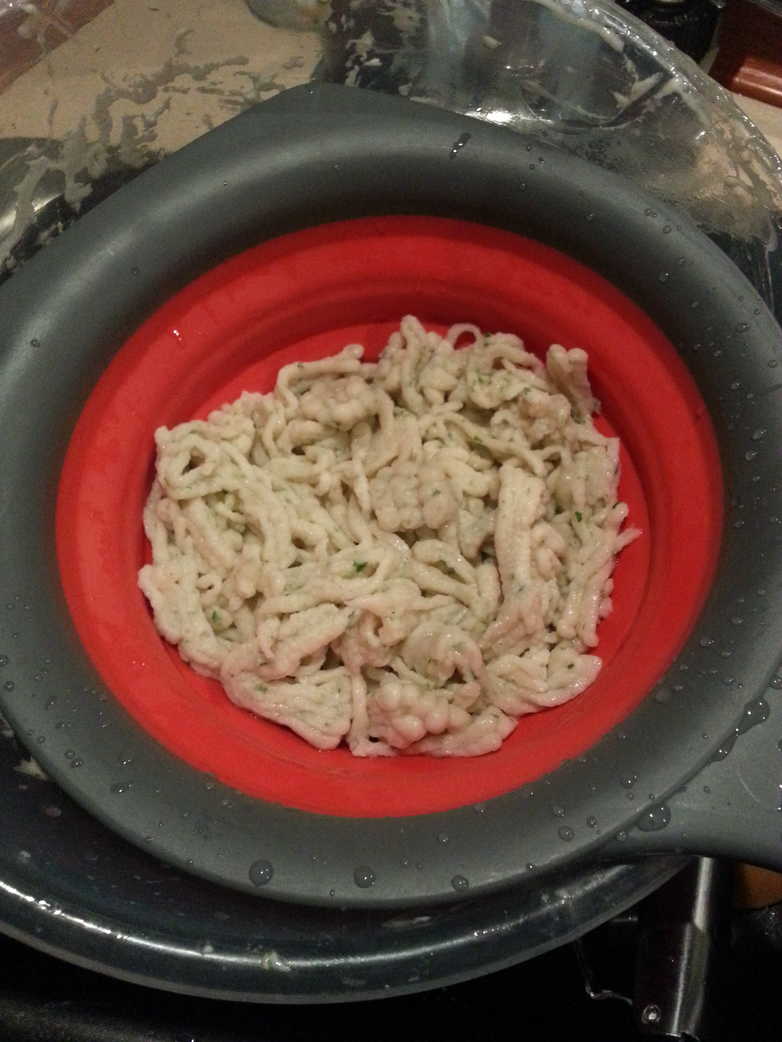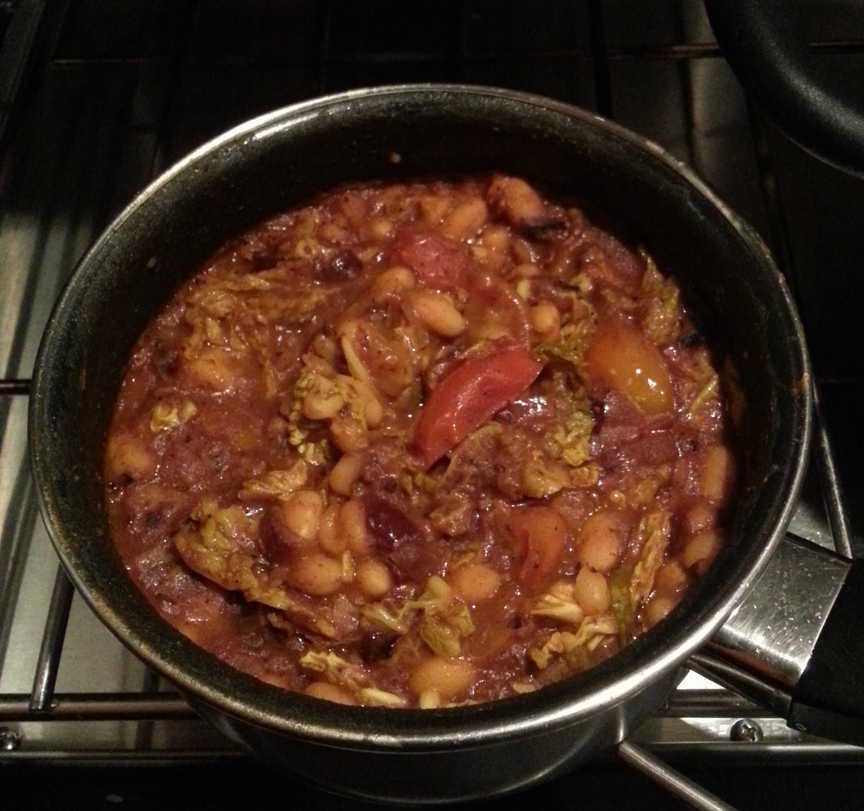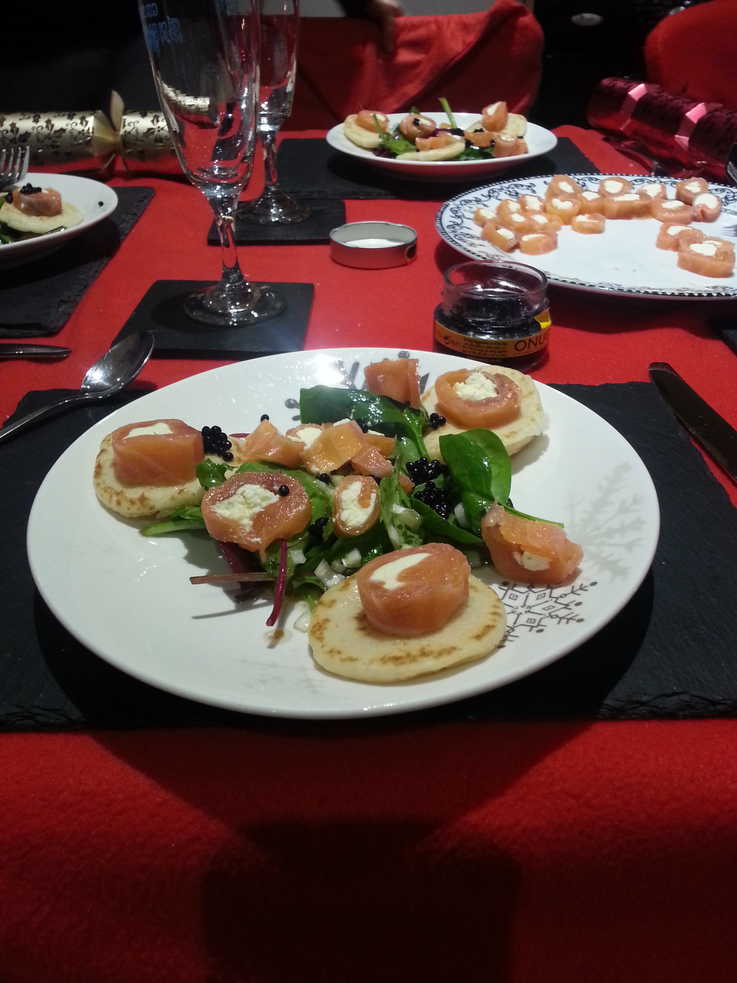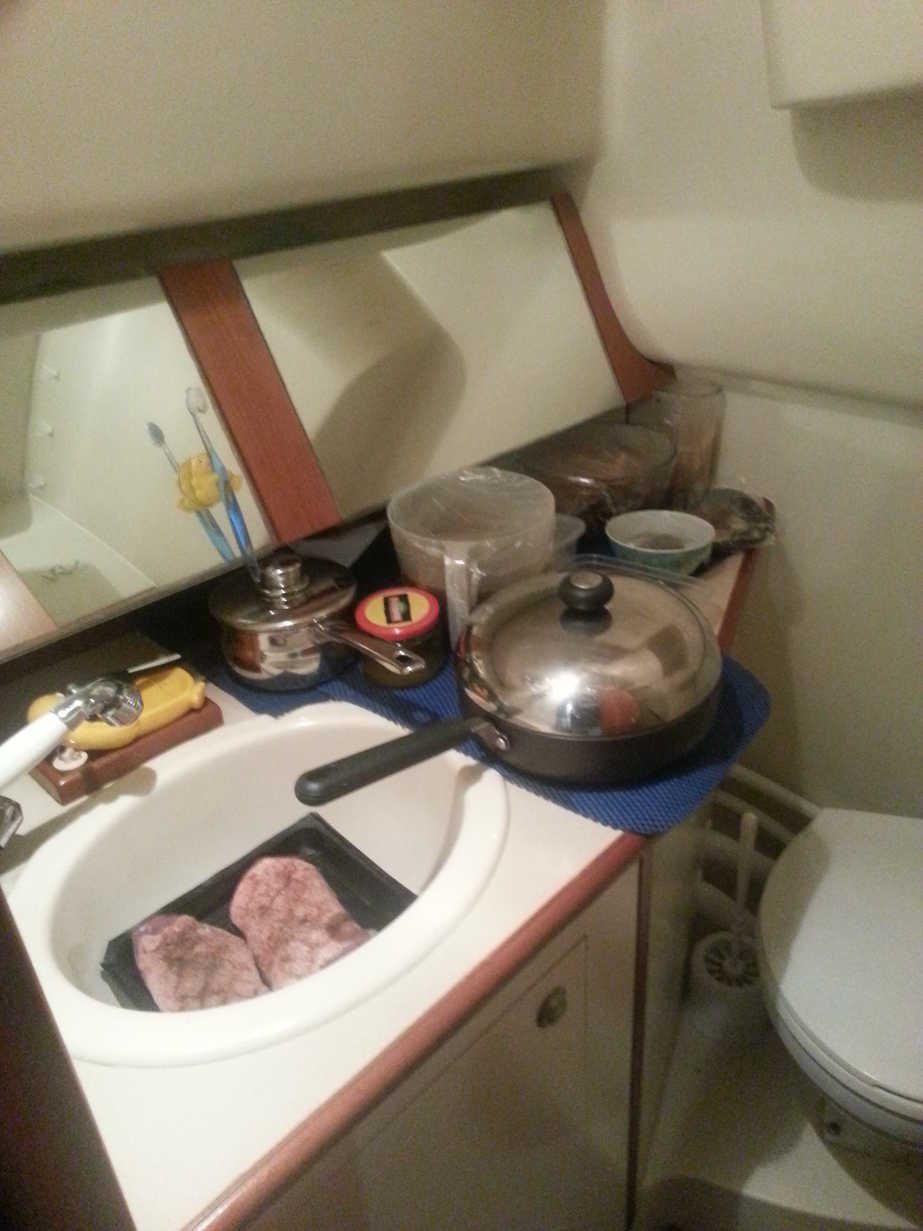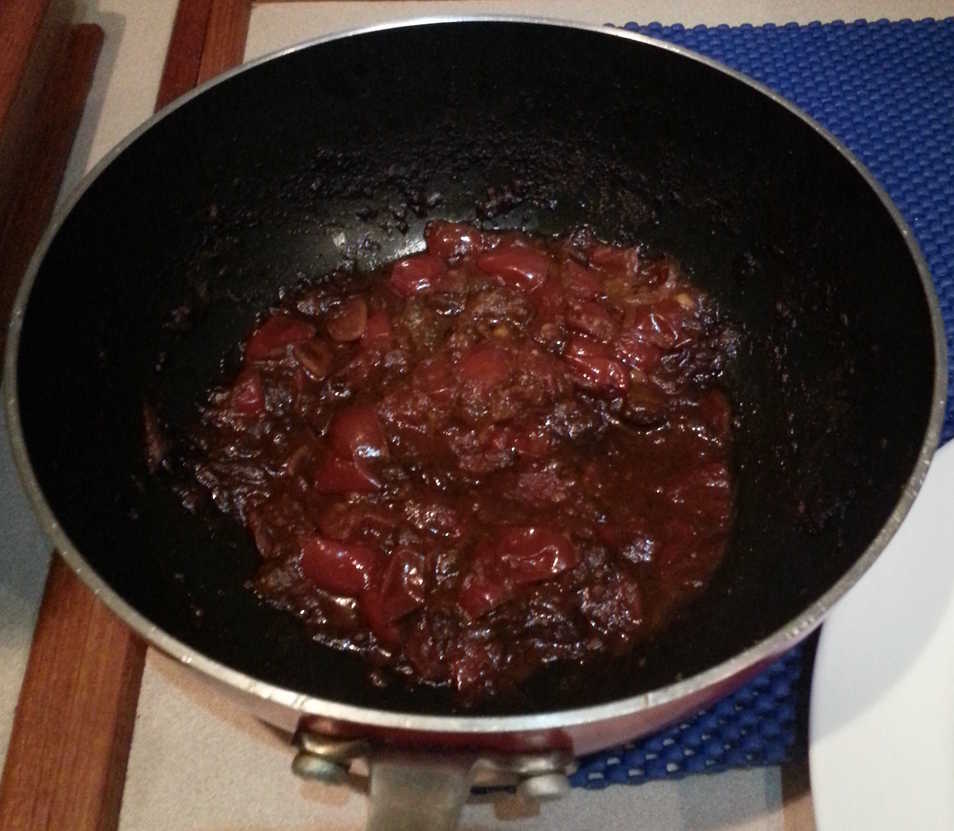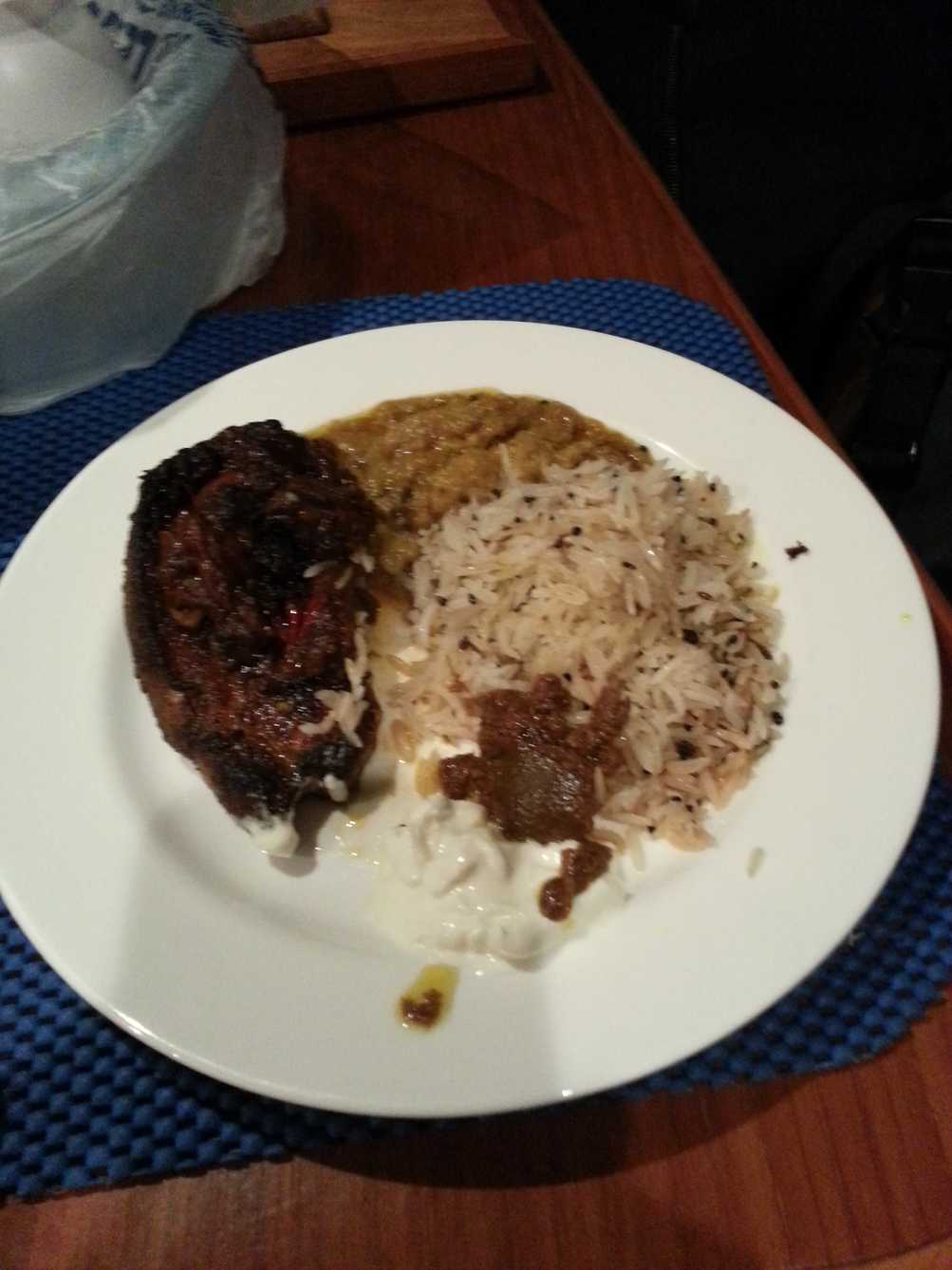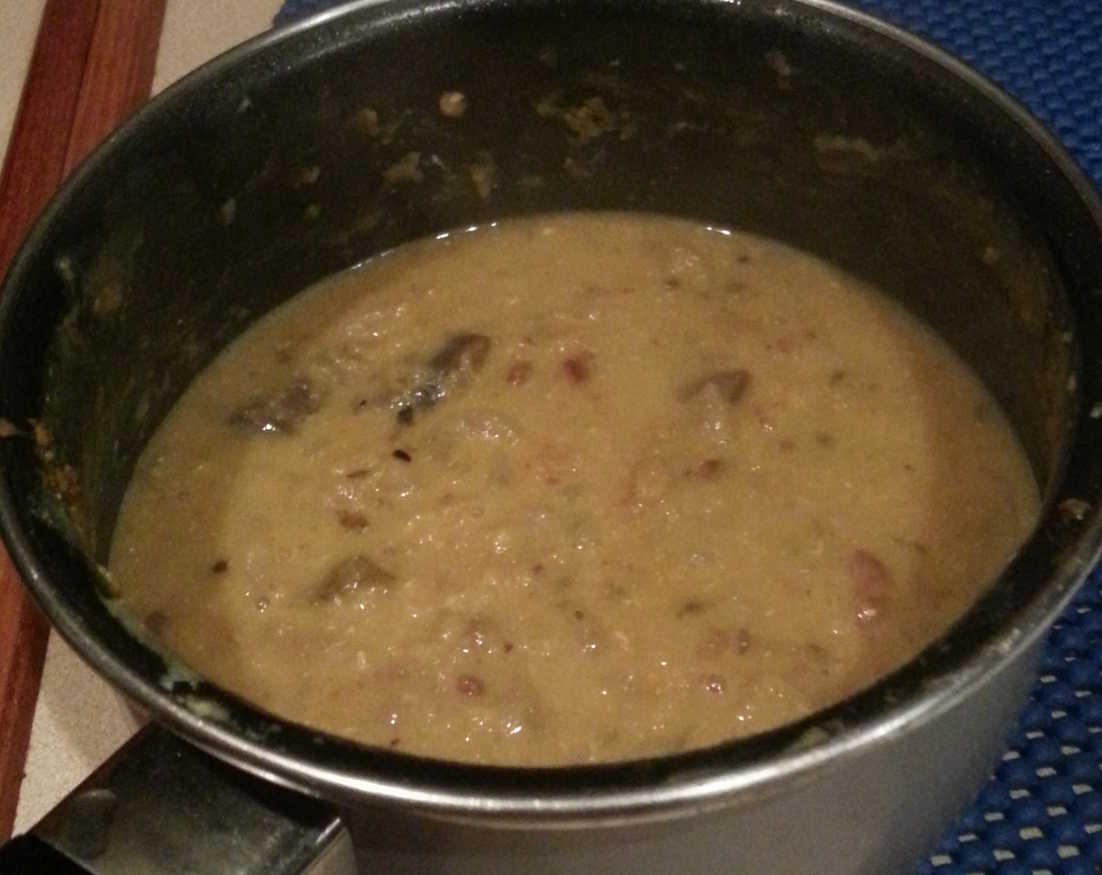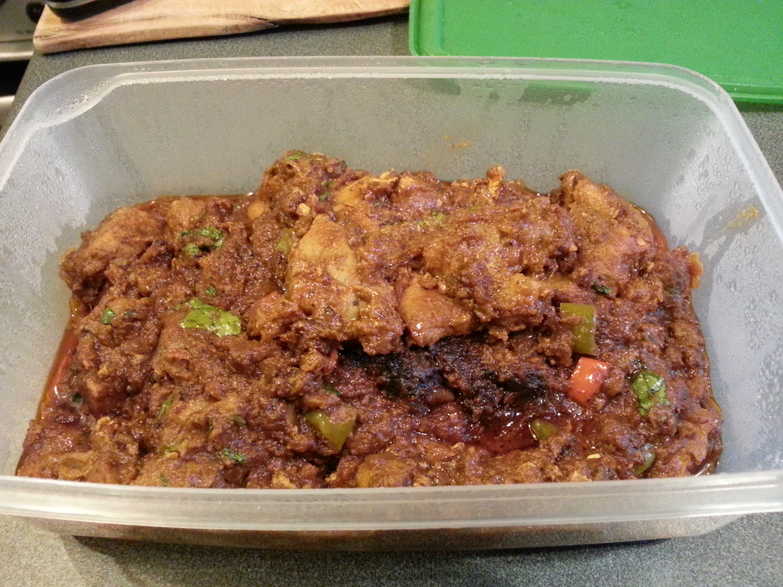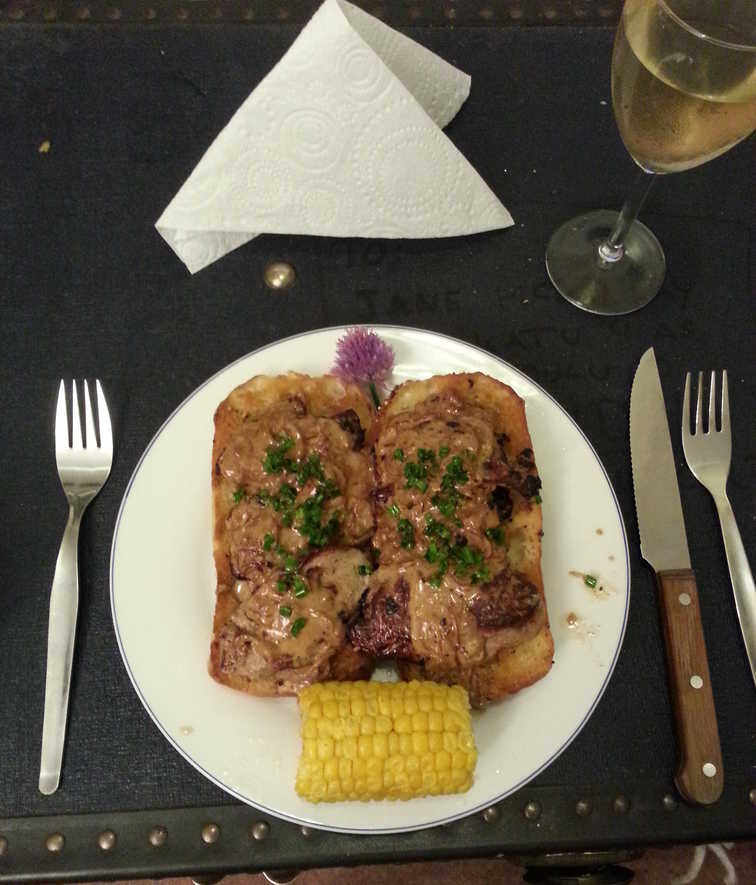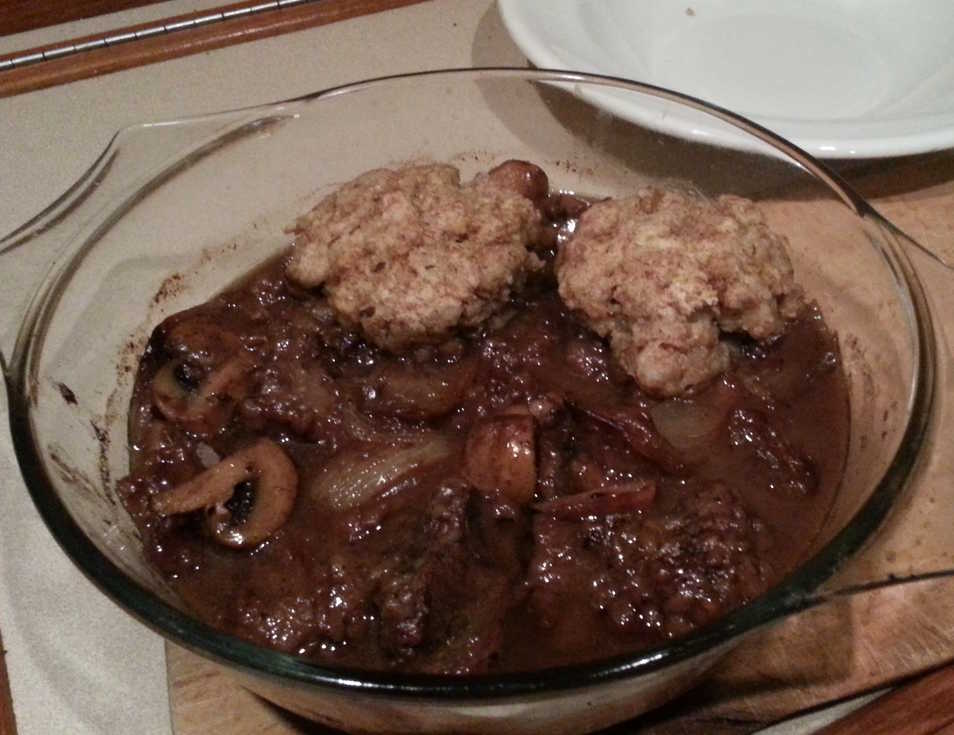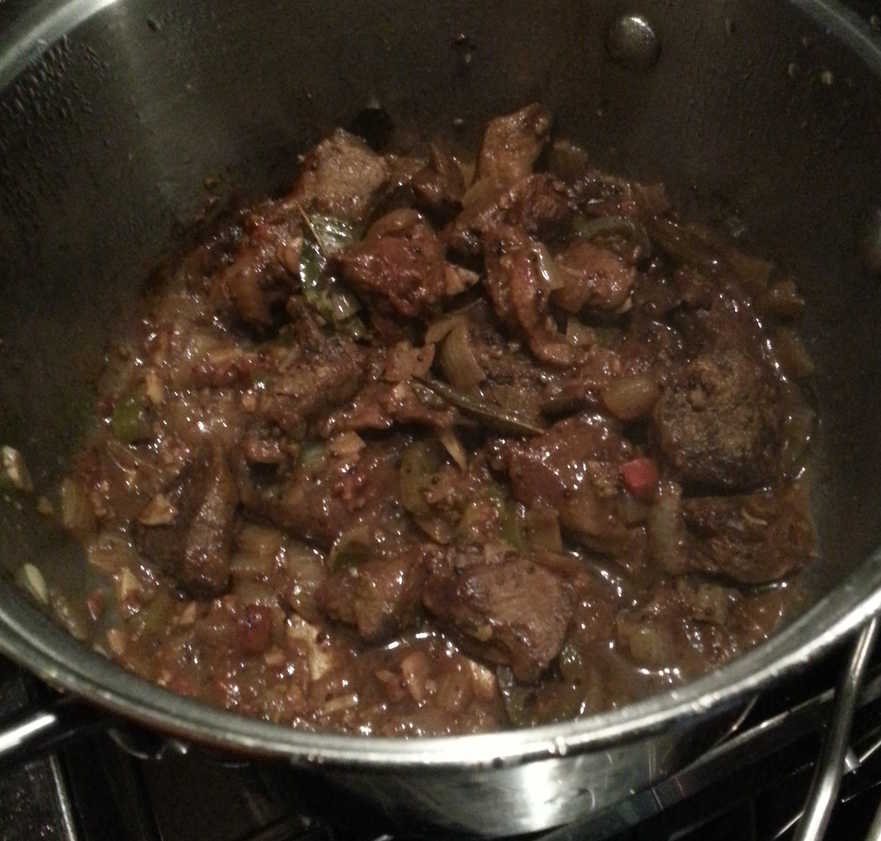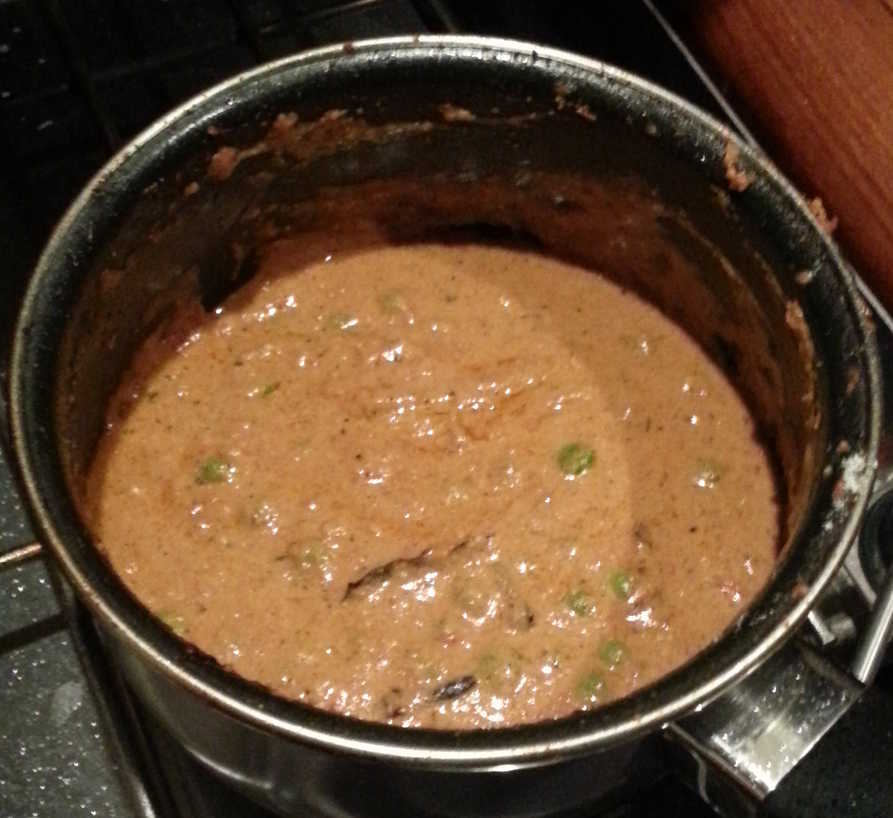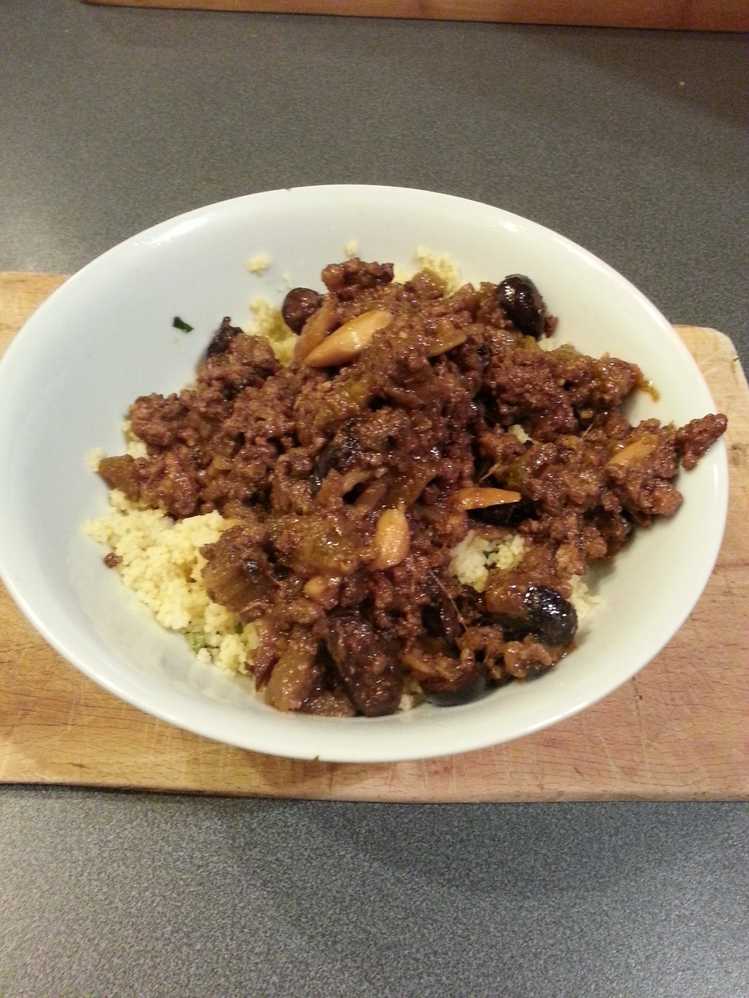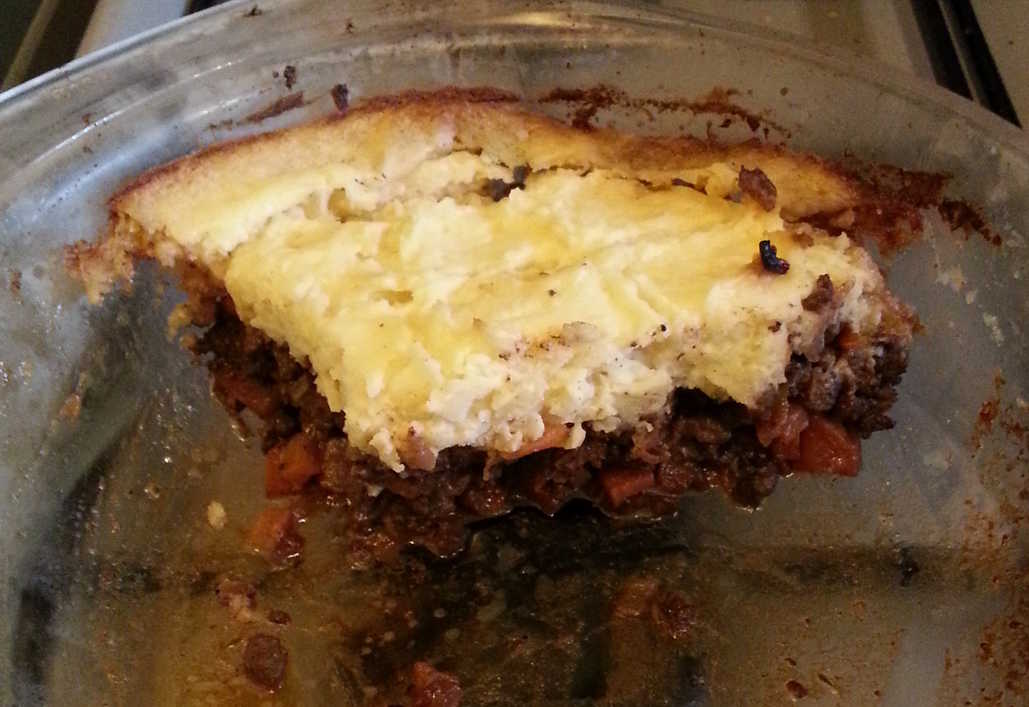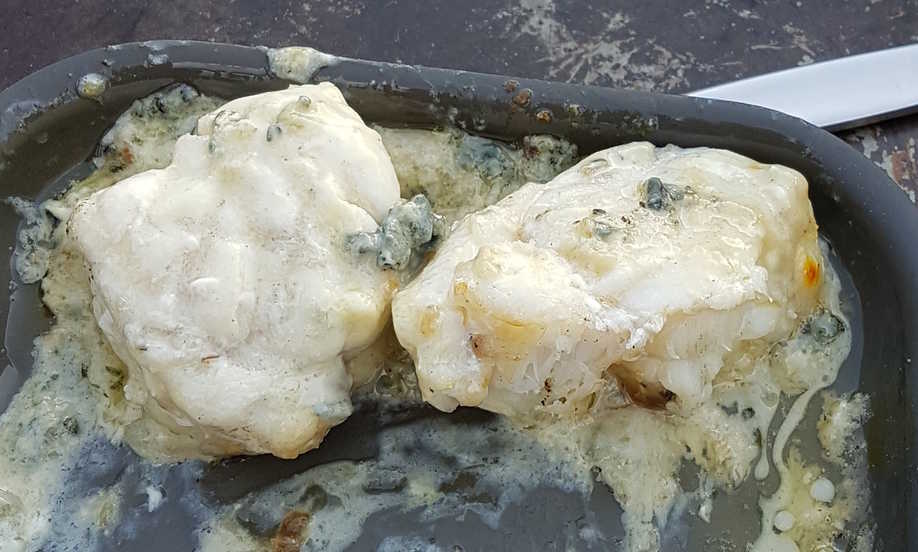
There'll Be Bluebirds Over The Brown Cliffs Of Dieppe

Why American bluebirds should be flying over the cliffs of either Dover or Dieppe is anyone's guess - maybe they escaped from a zoo? Anyhoo, they flew us to victory in a World War so who am I to judge?
You can see the coast of France from the shithole that is Dover (it's only about 18 miles away), so I thought I should visit. Well, it would have been rude not to :)
I didn't fancy Calais much, and I wanted to work my way westwards anyway, so I aimed my boat at Boulogne and set sail in a brisk beam breeze.
It wasn't so much that I'd underestimated the Channel tide (which runs at a surprising brisk pace in the middle - reaching over 3 knots at springs) as that I just assumed I would be better able to make up for lost ground when I got closer to France and escaped the strongest tide. So instead of holding my heading for Boulogne I allowed my course to drift eastwards - bearing away for the speed advantage, and ending up on the wrong side of Cap Gris Nez (The Grey Nose) headland with a long beat between me and Boulogne.
My cunning plan of using the bay behind Gris Nez to get out of the adverse tide was defeated by the unexpected (to me) shallowness of the bay, meaning I just had to grit my teeth and sail into the wind for hours, inching my way along the (rather dull) coastline making about half a knot. I finally, and extraordinarily gratefully, arrived at Boulogne's absolutely massive outer harbour in the dark, against a strong wind and heavy sea.
Next time I'll make sure to hold the course I need from the get-go and avoid sacrificing ground for speed.
Funny story, I had always believed the phrase éminence gris meant eminent pig, and so assumed the headland was called (which I thought appropriate)The Pig's Nose.
Until I looked it up.
And then figured out that the former phrase must actually refer to grey men. Live and learn.
The cliffs along the Normandy shoreline around Dieppe (known optimistically as the Alabaster coast) quite closely resemble the more famous cliffs of Dover. Except dirtier-looking. But about as interesting. Fortunately the actual harbour towns are really lovely, authentically historic in a way that British coastal towns are not, having held on fiercely not only to their architecture (they are absolutely littered with chateaux, and nary a cement tower block in sight) but to their traditional markets and small shops.
Between the chateau of Boulogne and the chateau of Dieppe you find the first St Valery, reached by sailing across a very long and tortuous stretch of the Somme, (I doubt we ever fought over it since it spends most of its time underwater. On the other hand - I have seen Blackadder...) and called, not surprisingly, St Valery sur Somme.
The navigable channel is less than obvious and I was relieved to have a yacht to follow in. Though I was less happy when he ran aground in front of me and I had to quickly plan my own course. Turned out he was English anyway, and had no more idea than I did. Or apparently less.
The other side of the chateau of Dieppe (when you can finally escape the first) lies the second Saint Valery - this one en Caux. Quite an old-fashioned harbour town with a thriving local fishing industry (and some fine cheese shops selling fine truffled cheese) where you can find heaps of gleaming whelks for those with more adventurous culinary taste.
For myself, next week I shall be mostly eating this pot of Mae Ploy's Thai green curry paste...
Things I've learned whilst living on a boat:
- There may be a reason your toilet smells awful.
- The reason your toilet may smell.
- You will always discover an item of dirty laundry, immediately you finish doing the laundry.
- Boats do not heal themselves. Except for that compass bubble. That healed itself.
The actual reason my toilet smells awful is an unfortunate side-effect of adding a small device to the inlet pipe which, ironically, is supposed to make the toilet smell better.
It's a pot of a hard disinfectant material which dissolves over time into the inlet water colouring and odourising the inlet water in imitation of those blue tablets you get for real toilets.
Unfortunately, once the disinfectant block has completely dissolved, the container makes an ideal trap for sea-going algae, slime and scum to grow and fester.
Somewhat defeating the purpose.
I have no explanation for the disappearance of my compass bubble.
Whelks
fish starter
Saint Valery-en-Caux on Normandy's Alabaster coast is a medieval fishing port which now does mostly tourism.
However, it does still boast an interesting quay of fish stalls where the six local fishing boats offload and sell their wares direct from the sea.
Yumsk.
I noticed one of the stalls selling mounds of whelks (bulots) which seemed particularly popular with the older locals, so I thought I'd give them a go. The only experience I've had with whelks is eating them pre-cooked and heavily vinegared in English coastal towns where they resemble nothing so much as pickled tumours.
The fisherman managed to convey that I should boil them in water for 10 minutes then eat them with salt and pepper. I soaked mine in a bucket of seawater for a few hours first to let them purge themselves of any grit (easy enough when you live on a boat floating in seawater), then fished them out and gave them a thorough brushing while their little feet were wriggling and extending, to get rid of as much mud and sand as possible.
I'd seen recipes calling for them to be cooked in seawater, but to be honest I've not had much success with cooking things in seawater (though I haven't tried lobster) so I used fresh water, and cooked them for about 8 minutes.
They were delicious! Pity I'd been put off all those years - but they did get a bit boring after a half-dozen. Garlic butter may be required.
You can prise your cooked whelk gently out of its shell with a slight twisting motion using a small knife, fork, pin or cocktail stick, whereupon you'll find various whelky parts:
As you eat them, try not to think of pickled tumours. Or foetuses. Or warts.
Yumsk.
I noticed one of the stalls selling mounds of whelks (bulots) which seemed particularly popular with the older locals, so I thought I'd give them a go. The only experience I've had with whelks is eating them pre-cooked and heavily vinegared in English coastal towns where they resemble nothing so much as pickled tumours.
The fisherman managed to convey that I should boil them in water for 10 minutes then eat them with salt and pepper. I soaked mine in a bucket of seawater for a few hours first to let them purge themselves of any grit (easy enough when you live on a boat floating in seawater), then fished them out and gave them a thorough brushing while their little feet were wriggling and extending, to get rid of as much mud and sand as possible.
I'd seen recipes calling for them to be cooked in seawater, but to be honest I've not had much success with cooking things in seawater (though I haven't tried lobster) so I used fresh water, and cooked them for about 8 minutes.
They were delicious! Pity I'd been put off all those years - but they did get a bit boring after a half-dozen. Garlic butter may be required.
You can prise your cooked whelk gently out of its shell with a slight twisting motion using a small knife, fork, pin or cocktail stick, whereupon you'll find various whelky parts:
- A hard leathery plate called the operculum at the bottom of the foot which seals the shell when the whelk withdraws inside. This part is inedible.
- The solid foot muscle closest to the opening of the shell, white with black speckles, and definitely the tastiest bit.
- A mass of yellow, gelatinous, black-streaked and vaguely translucent guts, gills and organs which resembles the insides of a mussel and surrounds the top of the foot muscle like a hooded cowl. Edible. Probably.
- A darker purple tubular proboscis which connects these latter two and is likely full of grit - this is the whelk's toothed feeding tube which you can pull out and discard
As you eat them, try not to think of pickled tumours. Or foetuses. Or warts.
You'll need 4-6 per person
Ingredients
- whelks
Dressings:- malt vinegar The classic British accompaniment. If you like that kind of thing.
- melted garlic butter
- aïoli
Thoroughly brush off and rinse your whelks - if you can soak them for a few hours (or days) first in seawater (or salted water) all the better.
Simmer the whelks in plenty of water (possibly salted) for 5-10 minutes.
Drain.
Prise the whelk out of its shell, pull free the solid white muscle and discard the leathery foot pad.
Dress.
Eat.
Simmer the whelks in plenty of water (possibly salted) for 5-10 minutes.
Drain.
Prise the whelk out of its shell, pull free the solid white muscle and discard the leathery foot pad.
Dress.
Eat.
Surprisingly pleasant once you've got rid of all the yeuchy bits.
Either that or eat them with your eyes closed.
Snails in Garlic Butter
meat starter
First catch your snails - about a dozen per person, depending on their size. Big fat juicy diners will require more snails.
Or you could have them donated by a kindly Belgian couple in France who were given them in turn by some locals who picked them off the beach - where they were snacking on some tasty seaweed they'd found above the tide-line.
Now they need to be purged since some of the algae and detritus they feast on might not agree with the human digestive system. Rinse them off with fresh water, then feed them on nice food for three days, rinsing them off in-between feeds. Cornmeal, oatmeal, flour or lettuce is good. Herbs might also work - particularly dill, (snails end up tasting of what they've been eating apparently). You should see a lot of poo.
Finally they need to be dried for three days. Hanging them in a net would be ideal - I used a plastic bag with (small) holes punched in it. There should be more poo.
Now they are ready to cook.
Or you could have them donated by a kindly Belgian couple in France who were given them in turn by some locals who picked them off the beach - where they were snacking on some tasty seaweed they'd found above the tide-line.
Now they need to be purged since some of the algae and detritus they feast on might not agree with the human digestive system. Rinse them off with fresh water, then feed them on nice food for three days, rinsing them off in-between feeds. Cornmeal, oatmeal, flour or lettuce is good. Herbs might also work - particularly dill, (snails end up tasting of what they've been eating apparently). You should see a lot of poo.
Finally they need to be dried for three days. Hanging them in a net would be ideal - I used a plastic bag with (small) holes punched in it. There should be more poo.
Now they are ready to cook.
Serve a dozen per person
Ingredients
- snails
- butter
- garlic
- lots of time
Throw your purged, dried snails in boiling water and simmer for 3 minutes. Cool in cold water and drain.
Gently prise the snails bodies out of their shells and wash in heavily salted cold water for 10-15 minutes, then rinse.
Serve with some nice crusty bread and a really tiny fork.
I didn't like the look of the green-tinged and mucousy snails' bellies (feet?) so I cut them away.
This might have been the hepatopancreas (digestive gland)
which I've read is usually removed in larger snails (Gros Gris)
but can be eaten in smaller varieties (Petit Gris).
I chose not to.
The best part is definitely the curly snail meat.
I also heard that after the drying you should cut away any crust which forms around the shell opening. I didn't do this - I don't know if the issues are related.
Meanwhile clean the shells thoroughly (I boiled them in the salted soaking water afterwards).
Mash finely chopped or pressed garlic with good butter.
Press some into a few choice snail shells, then push in a snail body.
If you have one of those fancy restaurant oven dishes with the little snail dimples, now is the time to use it.
Otherwise dot a small ovenproof pot or ramekin with some of the garlic butter, fill with the snails and a few stuffed shells for effect,
then top with the rest of the butter.
I chose not to.
The best part is definitely the curly snail meat.
I also heard that after the drying you should cut away any crust which forms around the shell opening. I didn't do this - I don't know if the issues are related.
I found it too fiddly to bother cooking (and eating) all the snails in their shells, so I just filled a few token ones.
Bake at 200°C/Gas Mark 6 for about 15 minutes until the garlic begins to cook down and take a little colour.Serve with some nice crusty bread and a really tiny fork.
Classic! And ready in under a week.
London's Barbecuing

My uni friends Chris and Cathy came by for dinner.
I was moored in Limehouse marina on the Isle of Dogs at the time - near Canary Wharf. A surprisingly salubrious area considering its proximity to Tower Hamlets, and walking distance from the new Billingsgate Fish Market which moved there from the City of London in 1982 - handy for me! Not so handy is the fact that you have to shop there between 4 a.m. and 6 a.m. and though they do sell to the public, they're not interested in cutting anything up. So you can buy a whole lobster, a whole crab, a whole salmon, a half-dozen scallops in their shell or anything by the ton, but if you want a few monkfish steaks you have to shop elsewhere; say the Canary Wharf branch of Waitrose, just around the corner.
My ex-skipper John kindly donated me a boat barbecue before I left Edinburgh - one of those which clamps onto your boat's stern rails. I wasn't completely convinced that it wouldn't just swivel round and dump the entire contents of the barbecue into the sea. Or worse, onto the hull and set fire to it. But it tested out pretty well with a whole (un-burning) bag of charcoal sitting on the grill so considering the extremely favourable weather, and having the approval of the marina, I decided that this was the time to crank it up. And it worked like a charm!
I'd originally been considering en-papillotte dishes - I was thinking of something like salt cod or monkfish with chorizo on a bed of carrots, flavoured with anise for Chris - the carnivore. Plus a bag with salmon, asparagus, and vodka flavoured with liquorice or perhaps vanilla, along these lines, for Cathy - the pesky tarian. I thought I could do these on the barbecue easily enough, but when I discovered that Billingsgate didn't sell fish by the piece I decided to mainly go with a whole-fish theme.
I also abandoned my plans for panna cotta dessert - partly because it started to feel like overkill and partly 'cos I couldn't be bothered figuring out how to substitute agar agar for the gelatine to suit someone strangely averse to boiled cows' hooves.
Given how hot it's been recently, and how hot it was forecast to be on Saturday, I thought it might be pleasant to have a couple of cold dishes too - which gave me the perfect opportunity to try out a dish I've been wanting to take a bash at ever since eating it at Edinburgh's Castle Terrace restaurant: a salmon tartar with puffed rice and wasabi ice cream.
Popping the rice turned out not to be such a problem, having read up on how to do it. Basically you cook some rice as normal (doesn't seem important what kind - I used Thai jasmine), then dry it (I baked it in the oven), then you deep-fry it to make it pop. Apparently you can puff wholegrain rice without pre-boiling since it explodes out of the husk, but I didn't try that.
That worked pretty well, though because the oil temperature has to be very high, and the rice scooped out almost instantly, you can only really fry very small batches. Fortunately this dish doesn't require very much puffed rice so that's not such an issue, and you can just pick out the grains which burn or don't pop.
The real problem for me was how to make ice cream on a boat with only a fridge!??
Well, since the temperature control knob in my fridge has seized up at arctic the element freezes solid, which means I can lay a small freezer bag of ice cream mixture on top of it, squidging the bag around occasionally to break up the ice crystals as it sets. Fortunately this dish doesn't need much ice cream either.
I also threw in a new (to me) Nigel Slater recipe for chilled crab soup.
Worried that my guests might not have enough to eat Ha Ha!, or at least that they might like something to soak up all the garlic juices, I had a Pyrex bowl of seasoned couscous standing by to which I'd added grated lemon peel and chopped parsley. In the end no one seemed desperate for more food and I didn't get around to making it. It's a handy thing to have ready though - all you need to do is add water!
Beforehand I put two whole heads of garlic in the oven to bake for about 40 minutes in a moderate oven (160°C/Gas Mark 3) until they softened, then squidged out the cloves into a bowl. I mixed half the roast garlic with butter, chopped parsley and salt & pepper then warmed it in a small saucepan for brushing over the fish on the barbecue you could add lemon zest and chilli flakes too if you liked. The other garlic head I kept for filling aubergines.
I didn't want to bake the (smallish) aubergines from scratch on the barbecue as I figured it would take too long and my barbecue is too small to dedicate so much space for so long. So I pre-cooked them in the microwave boo! hiss! for 2-3 minutes until they softened. I also threw them in the oven with the steak to warm back up again probably not necessary before cutting a slice out of the top of each, stuffing with garlic and crumbled feta cheese, and finishing them off on the barbecue.
The steak I also partly pre-cooked in the oven since it was so large I was afraid to burn the outside before warming it through on the barbecue, and didn't want to cut it down first.
I made up three barbecue flavourings, the first I kept warm in a small saucepan and the latter two I poured into plastic squeezy bottles for ease of delivery:
menuI was moored in Limehouse marina on the Isle of Dogs at the time - near Canary Wharf. A surprisingly salubrious area considering its proximity to Tower Hamlets, and walking distance from the new Billingsgate Fish Market which moved there from the City of London in 1982 - handy for me! Not so handy is the fact that you have to shop there between 4 a.m. and 6 a.m. and though they do sell to the public, they're not interested in cutting anything up. So you can buy a whole lobster, a whole crab, a whole salmon, a half-dozen scallops in their shell or anything by the ton, but if you want a few monkfish steaks you have to shop elsewhere; say the Canary Wharf branch of Waitrose, just around the corner.
My ex-skipper John kindly donated me a boat barbecue before I left Edinburgh - one of those which clamps onto your boat's stern rails. I wasn't completely convinced that it wouldn't just swivel round and dump the entire contents of the barbecue into the sea. Or worse, onto the hull and set fire to it. But it tested out pretty well with a whole (un-burning) bag of charcoal sitting on the grill so considering the extremely favourable weather, and having the approval of the marina, I decided that this was the time to crank it up. And it worked like a charm!
I'd originally been considering en-papillotte dishes - I was thinking of something like salt cod or monkfish with chorizo on a bed of carrots, flavoured with anise for Chris - the carnivore. Plus a bag with salmon, asparagus, and vodka flavoured with liquorice or perhaps vanilla, along these lines, for Cathy - the pesky tarian. I thought I could do these on the barbecue easily enough, but when I discovered that Billingsgate didn't sell fish by the piece I decided to mainly go with a whole-fish theme.
I also abandoned my plans for panna cotta dessert - partly because it started to feel like overkill and partly 'cos I couldn't be bothered figuring out how to substitute agar agar for the gelatine to suit someone strangely averse to boiled cows' hooves.
Given how hot it's been recently, and how hot it was forecast to be on Saturday, I thought it might be pleasant to have a couple of cold dishes too - which gave me the perfect opportunity to try out a dish I've been wanting to take a bash at ever since eating it at Edinburgh's Castle Terrace restaurant: a salmon tartar with puffed rice and wasabi ice cream.
Popping the rice turned out not to be such a problem, having read up on how to do it. Basically you cook some rice as normal (doesn't seem important what kind - I used Thai jasmine), then dry it (I baked it in the oven), then you deep-fry it to make it pop. Apparently you can puff wholegrain rice without pre-boiling since it explodes out of the husk, but I didn't try that.
That worked pretty well, though because the oil temperature has to be very high, and the rice scooped out almost instantly, you can only really fry very small batches. Fortunately this dish doesn't require very much puffed rice so that's not such an issue, and you can just pick out the grains which burn or don't pop.
The real problem for me was how to make ice cream on a boat with only a fridge!??
Well, since the temperature control knob in my fridge has seized up at arctic the element freezes solid, which means I can lay a small freezer bag of ice cream mixture on top of it, squidging the bag around occasionally to break up the ice crystals as it sets. Fortunately this dish doesn't need much ice cream either.
I also threw in a new (to me) Nigel Slater recipe for chilled crab soup.
Worried that my guests might not have enough to eat Ha Ha!, or at least that they might like something to soak up all the garlic juices, I had a Pyrex bowl of seasoned couscous standing by to which I'd added grated lemon peel and chopped parsley. In the end no one seemed desperate for more food and I didn't get around to making it. It's a handy thing to have ready though - all you need to do is add water!
Beforehand I put two whole heads of garlic in the oven to bake for about 40 minutes in a moderate oven (160°C/Gas Mark 3) until they softened, then squidged out the cloves into a bowl. I mixed half the roast garlic with butter, chopped parsley and salt & pepper then warmed it in a small saucepan for brushing over the fish on the barbecue you could add lemon zest and chilli flakes too if you liked. The other garlic head I kept for filling aubergines.
I didn't want to bake the (smallish) aubergines from scratch on the barbecue as I figured it would take too long and my barbecue is too small to dedicate so much space for so long. So I pre-cooked them in the microwave boo! hiss! for 2-3 minutes until they softened. I also threw them in the oven with the steak to warm back up again probably not necessary before cutting a slice out of the top of each, stuffing with garlic and crumbled feta cheese, and finishing them off on the barbecue.
The steak I also partly pre-cooked in the oven since it was so large I was afraid to burn the outside before warming it through on the barbecue, and didn't want to cut it down first.
I made up three barbecue flavourings, the first I kept warm in a small saucepan and the latter two I poured into plastic squeezy bottles for ease of delivery:
- roast garlic and parsley butter (as above)
- soy sauce steak dressing
- lemon and Ricard salad and fish dressing
On The Barbecue
A simply enormous Lobster
A simply enormous Lobster
Rock Lobster!
With my favourite butter flavour of roast garlic and parsley.
With my favourite butter flavour of roast garlic and parsley.
Monkfish with St Agur
Sundries
Salmon Tartar with Puffed Rice and Wasabi Ice Cream
Dessert
Barbecued Pineapple Slices
Monkfish steaks brushed with our ubiquitous roast garlic butter, grilled, then slathered with blue cheese.
And by God are they delicious!
ScallopsAnd by God are they delicious!
Brushed with roast garlic butter, grilled,
then squirted with lime juice or some of the lemon and Ricard dressing.
Freshly shelled, perfectly cooked, and not in the least bit leathery.
An 18oz Picanha SteakFreshly shelled, perfectly cooked, and not in the least bit leathery.
Such an enormous thick hunk of Argentinian Picanha-cut cow rump that it needed pre-warming in a low oven before barbecuing to finish it off.
Cut into manageable chunks and doused with the soy sauce dressing.
Tuna Steaks
Seasoned with salt and pepper and brushed with oil.
Grilled, then dressed with the lemon and Ricard dressing.
Is how I'd have done them, if I'd bought any.
Salmon SteaksIs how I'd have done them, if I'd bought any.
I had intended to buy some tuna steaks to serve as above, but since Billingsgate Market only sells fish by the fish (or the case of fish)
I'd ended up with a lot of salmon.
So I served some grilled salmon steaks instead.
Lightly seasoned and oiled before grilling -
they'd've been OK with the lemon and Ricard dressing
but they were delicious with wasabi ice cream (with extra wasabi!).
Sundries
Salmon Tartar with Puffed Rice and Wasabi Ice Cream
My pièce de resistance.
Chilled Crab and Cucumber Soup
A refreshing break from hot food in the hot sun.
Seedy Bread
Made with seed & grain white flour according to
Dan Lepard's technique for wholemeal bread.
Which works just as well with strong white flour.
Watermelon, Feta and Block Olive SaladWhich works just as well with strong white flour.
Served on rocket dressed with lemon and Ricard dressing,
or at least it would have been if I'd remembered.
Asparagus
A handful of asparagus stalks thrown onto the barbecue every so often to char - they go well with everything.
Baked Aubergines
Stuffed with roast garlic and topped with feta cheese, in this case,
since I already had some for the salad and couldn't be bothered also buying goat's cheese.
Though I admit that would have tasted significantly better.
Couscous with Parsley and Lemon ZestThough I admit that would have tasted significantly better.
Just in case :)
Dessert
Barbecued Pineapple Slices
Fat slices of pineapple left on the dying barbecue until they began to blacken a little.
The perfect barbecue end. Well, possibly excepting another round of Sailor Jerry's rum and ginger beer (thanks Chris!).
The perfect barbecue end. Well, possibly excepting another round of Sailor Jerry's rum and ginger beer (thanks Chris!).
Presto Pesto and Other Stories.

There aren't that many places on the Wash that a yacht with a keel (or a mast) can sail into.
Like its namesake across the Atlantic, Boston used to be a great fishing and trading port,
but it no longer offers harbour for boats that can't drop their masts.
Fosdyke and Wisbech are a long way inland, and I'm not even sure they're accessible for yachts.
Which pretty much leaves King's Lynn, which offers a rather nice pontoon in the heavily tidal river Ooze Ouse
in a spot with just enough water to keep my boat afloat at low water.
The meandering passage from the wash across shallow mud flats into the river is just short enough make it in over a high tide.
So I decided to pay a visit.
King's Lynn is also close enough to Cambridge to visit with my old friend Professor Nick. Bonus.
Nick invited me back to his place in Cambridge to spend the night and catch up with his lovely wife Belgium and his precocious children, though he didn't go so far as to offer me his washing machine to do all my smelly laundry.
Still, we had a gay old time revisiting our old university haunts, drinking 'til it hurt, and marvelling at the hordes of hipster douche-bags infesting the bars with lumberjack flannel and jihadi beards.
Back in King's Lynn, Nick and I went for lunch and discovered a completely a completely brilliant little restaurant - Richard and Lucy Golding's Market Bistro, which now seems, sadly, to have closed :( so good I had to revisit later to eat the rest of the menu.
It's a small place, and some of their tables are a little cramped, but they more than make up for it with their locally sourced, brilliantly inventive and incredibly thorough food. Their attention to detail is astonishing - I couldn't understand why the black pudding served with their rare breed pork collar course was so succulent , until they explained that they had taken a local black pudding, pureéd it, calcified it, reverse spherified it, then floured and deep-fried it to serve.
And this is just one of the four side dishes that come with the meat, bear in mind.
Now that's dedication!
Richard's chefery inspired me to attempt to reproduce both his luxurious spring cabbage with truffled cheese (an optional side dish) and his throwaway amuse bouche - goats cheese and onion marmalade tuile. With mixed success :)
So delicious.
Unfortunately next week I will be mostly eating pesto...
King's Lynn is also close enough to Cambridge to visit with my old friend Professor Nick. Bonus.
Nick invited me back to his place in Cambridge to spend the night and catch up with his lovely wife Belgium and his precocious children, though he didn't go so far as to offer me his washing machine to do all my smelly laundry.
Still, we had a gay old time revisiting our old university haunts, drinking 'til it hurt, and marvelling at the hordes of hipster douche-bags infesting the bars with lumberjack flannel and jihadi beards.
Back in King's Lynn, Nick and I went for lunch and discovered a completely a completely brilliant little restaurant - Richard and Lucy Golding's Market Bistro, which now seems, sadly, to have closed :( so good I had to revisit later to eat the rest of the menu.
It's a small place, and some of their tables are a little cramped, but they more than make up for it with their locally sourced, brilliantly inventive and incredibly thorough food. Their attention to detail is astonishing - I couldn't understand why the black pudding served with their rare breed pork collar course was so succulent , until they explained that they had taken a local black pudding, pureéd it, calcified it, reverse spherified it, then floured and deep-fried it to serve.
And this is just one of the four side dishes that come with the meat, bear in mind.
Now that's dedication!
Richard's chefery inspired me to attempt to reproduce both his luxurious spring cabbage with truffled cheese (an optional side dish) and his throwaway amuse bouche - goats cheese and onion marmalade tuile. With mixed success :)
So delicious.
Unfortunately next week I will be mostly eating pesto...
Pesto Salmon en Croûte
fish main
I made mine with a ½kg salmon fillet using a jar The Shame, The Shame! of
roasted red pepper pesto,
but a sun-dried tomato based version would be equally good.
Or green pesto - that will work too, though be careful not to overdo it.
Or green pesto - that will work too, though be careful not to overdo it.
Serves 4
Ingredients
- pesto
- a side of salmon (about 1kg), skinned, de-boned
- puff pastry, rolled
- parmesan, grated
Preheat the oven to 200°C/400°F/Gas Mark 6.
Skin the side of salmon and check for bones with your fingers. Remove any you find with fish tweezers.
Cut the salmon in half across its width.
Roll out a large enough sheet of puff pastry to wrap the salmon and lay one half of the salmon, skinned-side down, in the centre.
Season the salmon and smear with pesto, about a ½ inch thickness. Cover with a generous grating of parmesan. Lay the second piece of salmon on top skinned-side up, but reversed so that fat ends mate with thin ends, giving an even thickness all along the length.
Season.
Fold over the puff pastry and seal the salmon in you can brush on a little milk or beaten egg to help if you like. Turn over the salmon parcel, and cut a few slits in the pastry to release any steam.
Sprinkle with salt and pepper.
Put the parcel to chill, loosely covered, for 15 minutes to help the pastry to crisp, if you can be bothered. Especially if you aren't ready to cook it yet.
Skin the side of salmon and check for bones with your fingers. Remove any you find with fish tweezers.
Cut the salmon in half across its width.
Roll out a large enough sheet of puff pastry to wrap the salmon and lay one half of the salmon, skinned-side down, in the centre.
Season the salmon and smear with pesto, about a ½ inch thickness. Cover with a generous grating of parmesan. Lay the second piece of salmon on top skinned-side up, but reversed so that fat ends mate with thin ends, giving an even thickness all along the length.
Season.
Fold over the puff pastry and seal the salmon in you can brush on a little milk or beaten egg to help if you like. Turn over the salmon parcel, and cut a few slits in the pastry to release any steam.
Sprinkle with salt and pepper.
Put the parcel to chill, loosely covered, for 15 minutes to help the pastry to crisp, if you can be bothered. Especially if you aren't ready to cook it yet.
If you like you can cut small fish shapes out of any leftover pastry and use them to decorate the salmon parcel.
You can also brush it with beaten egg, which will give it a golden glaze when cooked.
Lay the salmon parcel on an oiled baking sheet, seam-side down, and bake for about 30 minutes until cooked.
You want the pastry to turn colour without overcooking the salmon.
Use a skewer to test the middle of the fish - it should feel warm for medium salmon, piping hot when the fish is well done
or overdone, as I would call it.
You may have to adjust the oven temperature to get the pastry and fish ready at the same time.
I served mine with creamed spinach
and dill salad potatoes
(potatoes boiled, quartered, seasoned, and mixed with sour cream, mayonnaise, chopped dill. Probably a little mustard would work too).
If you'd like (and you will), serve with cauliflower with creamy pesto sauce, or with just the sauce made by heating a pint of double cream and stirring in the juice of a lemon, 4 tbsps red pesto and 4 tbsps chopped basil.
If you'd like (and you will), serve with cauliflower with creamy pesto sauce, or with just the sauce made by heating a pint of double cream and stirring in the juice of a lemon, 4 tbsps red pesto and 4 tbsps chopped basil.
Ve hav vays of making you eat red pesto.
Cauliflower with Creamy Pesto Sauce
side veg
I've got a jar of red pesto to use up - can you tell?
Serves 4
Ingredients
- 1 cauliflower, broken into florets
- 1 pint double cream
- 4 tbsps red pesto
- 4 tbsps sliced basil
- juice of 1 lemon
- 2 cloves garlic, crushed
Break the cauliflower into florets and simmer until tender.
Press or purée the garlic and mix with the cream. Heat to a simmer, then add the pesto.
Remove from the heat and stir in the basil and lemon juice.
Pour over the cauliflower (or make the whole thing in one pot).
Press or purée the garlic and mix with the cream. Heat to a simmer, then add the pesto.
Remove from the heat and stir in the basil and lemon juice.
Pour over the cauliflower (or make the whole thing in one pot).
Yep, more pesto used.
Fantasy Cabbage Rolls
main meat
As transcribed from a bag of Nishiki sushi rice.
Sounds a bit mundane (not to mention un-roll-like) for it's exuberant title. Wonder how it would turn out.
Sounds a bit mundane (not to mention un-roll-like) for it's exuberant title. Wonder how it would turn out.
Serves 5
Ingredients
- 1 lb pound lean, ground beef
- 1 medium onion, chopped
- 1 clove garlic, pressed
- 1 x 14½ oz can whole peeled tomatoes
- ¾ cup sushi rice
- 2 tablespoons soy sauce
- ½ teaspoon oregano, crumbled
- ½ teaspoon basil, crumbled
- ½ teaspoon black pepper
- ¾ lb green cabbage, cut into bite-sized chunks (about 4 cups)
Heat large frying pan over high heat.
Add beef; sauté 3 to 4 minutes, or until nicely browned.
Add onion and garlic; sauté 1 minute longer.
Mix in tomatoes (undrained), breaking up with a spoon, rice, soy sauce, oregano, basil, pepper and 1-1¼ cups water.
Arrange cabbage on top. Bring to a boil. Reduce heat to low.
Cover and simmer 30 minutes, or until liquid is absorbed.
Stir cabbage into beef mixture.
Cover and let stand 10 minutes before serving.
Add beef; sauté 3 to 4 minutes, or until nicely browned.
Add onion and garlic; sauté 1 minute longer.
Mix in tomatoes (undrained), breaking up with a spoon, rice, soy sauce, oregano, basil, pepper and 1-1¼ cups water.
Arrange cabbage on top. Bring to a boil. Reduce heat to low.
Cover and simmer 30 minutes, or until liquid is absorbed.
Stir cabbage into beef mixture.
Cover and let stand 10 minutes before serving.
Boat Grub

A random collection of food I cooked up on the boat, from savoury bread puddings to treacle puddings.
And some recipes that aren't puddings.
When I moved aboard I emptied the contents of my kitchen into the boat and now I should be doing all I can to use it all up. Trouble is, whenever I buy fresh food I end up using that first. And bacon sandwiches are sooooo delicious. I'm going to have to resist and force myself to improvise with the stores I have aboard, though I usually do manage to squeeze some dried beans or at least flour into every meal.
As you can see below, I don't always succeed but it does make for a fragrant vessel :)
Spaetzle (or Spätzle)
German egg noodles
staple pasta
Basically German pasta, and a good way to use up some flour.
Unlike the Italian version you can use ordinary flour, not durum flour or semolina, and the mixture is made a lot sloppier with milk or water
(milk produces a richer Spaetzle).
Though the exact proportions of flour, egg and milk don't seem terribly important (I've seen recipes which treble the number of eggs) the mixture should end up
like a very thick pancake batter - loose enough to pour slowly, but firm enough not to run through the tines of a fork.
You can flavour the noodles with herbs (parsley for e.g.), garlic, spices (nutmeg is typical in Germany), or even add puréed squash to the mix.
There are a number of ways of creating the noodles from the batter, and a number of specialised tools available too. You can press the mixture through a colander or the back of a fat cheese grater using a spatula (slow, awkward and messy), or you could try using a potato ricer, though the holes are a little small and too closely spaced so the noodle strands tend to clump together.
There are a number of ways of creating the noodles from the batter, and a number of specialised tools available too. You can press the mixture through a colander or the back of a fat cheese grater using a spatula (slow, awkward and messy), or you could try using a potato ricer, though the holes are a little small and too closely spaced so the noodle strands tend to clump together.
Serves 4-6
Ingredients
- 4 cups all-purpose flour (you can also use whole wheat flour)
- 1-2 teaspoons salt
- 4 large eggs
- 1 cup/280ml milk or water
- ¼ cup/70ml additional milk or water, as required
Optional Flavourings:- ¼ teaspoon freshly grated nutmeg traditional
- other spices (e.g. paprika)
- chopped herbs
- puréed garlic
Add the flour, salt and flavourings to a bowl. Stir to combine.
Crack the eggs into a small bowl and whisk them. Whisk in the main quantity of milk.
Make a well in the center of the flour mixture and pour in the liquid.
Use a wooden spoon, or a mixer with a dough hook attachment and knead the dough for 16-20 minutes, or until bubbles appear.
Add as much additional milk as required to achieve the consistency of muffin batter.
After 15 minutes or less of beating, use a wooden spoon to scoop and pull the dough. If bubbles/holes appear, the dough is done.
They can be stored in the fridge for at least a couple of days before using.
To serve, heat some butter in a large frying pan and toss in the spätzle to heat through. Season again if you like.
The purpose of this is to develop the gluten in the flour, though I've seen other recipes which just leave the dough to sit for 15 minutes,
so I'm not quite sure how critical the beating is. Anyway - you'll end up with a suggestion of chewing gum about the final consistency.
Bring at least 2 quarts of lightly salted water to a boil, then reduce to a simmer.
Using the Spätzle maker of your choice, cut the noodles into the simmering water. They will sink to to bottom.
When they float to the surface after a minute or two, they're done (though they may need a nudge to free them from the bottom of the pan).
Use a slotted spoon to transfer the noodles to a colander, and then dump the noodles in a large bowl of ice water.
Drain thoroughly again.They can be stored in the fridge for at least a couple of days before using.
To serve, heat some butter in a large frying pan and toss in the spätzle to heat through. Season again if you like.
Good, a nice consistency. Works well with tuna fish and horseradish sauce.
Baked Beans Curry
veg side curry
Every yacht has a collection of tinned baked beans, and mine is no exception.
Unfortunately I don't really like plain old baked beans. Hence the search for other palatable dishes in which to use them up, together with some ageing sauce sachets.
Unfortunately I don't really like plain old baked beans. Hence the search for other palatable dishes in which to use them up, together with some ageing sauce sachets.
Serves 2
Ingredients
- 1 tsp turmeric
- 2 tsps ground ginger
- 2 tsps coriander
- 1 tsp ground cumin
- oil or ghee
- ½ red onion, finely chopped
- 1 tsp pressed garlic
- 1 tsp dried fenugreek leaves
- 8 cherry tomatoes, quartered
- ¼ savoy cabbage finely shredded
- 1 tub/sachet barbecue sauce
- 1 tub/sachet Frank's hot sauce
- 1 400g tin baked beans
Mix the ground spices with enough water to make a thick paste.
Heat a generous amount of oil or ghee in a small pan and cook the paste over a gentle heat until the raw aroma goes and the oil separates.
Add finely chopped red onion and fry a little until the onion begins to crinkle but don't burn the spices.
Stir through crushed dried fenugreek leaves, add quartered tomatoes and pressed garlic and cook until the tomatoes begin to collapse.
Throw in the cabbage and cook briefly until it begins to collapse.
Add a tub of barbecue sauce (one of those you get free from a burger joint) and a tub of hot sauce (or their equivalent from bottles!).
Add the baked beans, and stir until heated through.
Serve.
Add finely chopped red onion and fry a little until the onion begins to crinkle but don't burn the spices.
Stir through crushed dried fenugreek leaves, add quartered tomatoes and pressed garlic and cook until the tomatoes begin to collapse.
Throw in the cabbage and cook briefly until it begins to collapse.
Add a tub of barbecue sauce (one of those you get free from a burger joint) and a tub of hot sauce (or their equivalent from bottles!).
Add the baked beans, and stir until heated through.
Serve.
Quite palatable. As baked beans go.
So That Was Christmas

Hope it was a good one!
This year Flora joined my brother, his kids and me for our traditional Christmas celebrations, bringing with her a very nice bottle of Pouillon's demi-sec champagne, a jar of ersatz caviar, the largest vacuum pack of smoked salmon I've ever seen, and Christmas presents galore.
She also forced us, rather uncharacteristically, out of the house to see Bradford's Christmas panto (Peter Pan at the Alhambra for your information). Oh Yes She Did!
Flora has ways of making you jolly :)
We enjoyed all the usual Christmas day fayre - the goose, the PERFECT stuffing, the sprouts, the bread sauce, the roasties and the gravy. Oh the gravy.
Turns out that 6 hours of gravy-making (first kill your chicken...) can really make a yacht moist. I hope she's dried out by the time I get back to her in the new year.
For the starter this year I thought I'd have a go at some smoked salmon panna cottas, but wasn't too enamoured of the result (though I might revisit them when I have more time and inclination - I'm quite keen on the idea of savoury panna cottas) so I went for a starter made from an earlier recipe for Smoked Salmon with Horseradish Mousse rolls. This time though I pressed the horseradish flavoured cream through a sieve to remove the lumps, and added a little vodka too - well hell, it IS Christmas.
We sliced the rolls into rounds and served them with spring onions and mixed salad leaves on miniature blinis, and scattered Flora's caviar well, Onuga, on top. They went down very well, though that might have had something to do with how hungry we were waiting for the bread sauce!
What we (re-)learned this year:
- Your bread sauce might take up to 2 hours at the bottom of the goose oven, especially if you've made a double quantity, and didn't pre-heat the milk.
- Our stuffed 14lb goose took 5 hours at Gas Mark 3 in Kurt's oven (which I think runs a little hot) to be perfectly cooked well, perfectly cooked for Kurt - slightly overdone for my taste. In fact, I had to turn the oven down a little and cover the goose in foil due to waiting for the bread sauce.
- You can overdo the apple in the Perfect Christmas stuffing recipe - one apple (as written) is just right
- Christmas Gravy is even better if you first poach your chicken for 45 minutes in white wine and water flavoured with herbs, peppercorns, allspice, and orange zest and then use the carcass and poaching liquid as the basis for the stock. (And the rest of the chicken for a tasty Thai soup.)
- You can use your leftover gravy as stock for your pilaf. In fact, you probably should.
- It's easy to curdle brandy butter as you blend it, though it still tastes fine. Unfortunately, despite the fact he requested it, your brother won't eat it anyway.
- Starting the twelve days of Christmas mornings with a Bloody Mary definitely helps to make your brother's kids more bearable :)
Christmas is rounded off by our traditional, if slightly melancholy, pilaf, into which goes everything we have left.
Boo Ho Ho!
Smoked Salmon Panna Cotta
fish starter
I fancied a savoury panna cotta to try out as a Christmas start so
I thought I might enhance
Bluestem's smoked salmon panna cottas
with a little horseradish flavour and some buttermilk sourness.
Actually I didn't really like the sourness, so maybe give the buttermilk a miss next time. Sour cream instead perhaps.
The consistency was good, but perhaps set a little hard so try a touch less gelatine - not sure how little is actually required to set cream?
Makes 2 large or 8 small servings
Ingredients
- 300ml double cream
- 5 oz smoked salmon
- 2 tblsps horseradish
- 200ml buttermilk
- 1 tblsp sugar
- 2 tsp/1 pack gelatine powder
- a splash of vodka
To Serve:- mixed leaf salad with spring onions
Grate the horseradish into the buttermilk and stir. Leave to infuse for an hour or two.
Pour the cream into a small saucepan and sprinkle over the powdered gelatin. Let it sit for a few minutes to bloom.
Heat the cream over medium-high heat to dissolve the gelatin. Add the salmon and sugar and turn the heat to high. As soon as the cream comes to a simmer, remove it from the heat and blend until smooth.
Once cooled, add the horseradish buttermilk and the vodka, then strain through a couple of layers of muslin or a fine sieve. You should be left with quite a lot of fibrous salmon.
Pour into moulds or ramekins and set to cool in the fridge for 6 hours or overnight.
Serve with spring onions, bread and perhaps a leafy salad.
Pour the cream into a small saucepan and sprinkle over the powdered gelatin. Let it sit for a few minutes to bloom.
Heat the cream over medium-high heat to dissolve the gelatin. Add the salmon and sugar and turn the heat to high. As soon as the cream comes to a simmer, remove it from the heat and blend until smooth.
Once cooled, add the horseradish buttermilk and the vodka, then strain through a couple of layers of muslin or a fine sieve. You should be left with quite a lot of fibrous salmon.
Pour into moulds or ramekins and set to cool in the fridge for 6 hours or overnight.
This will fill either two large ramekins or 8-10 one inch moulds.
Alternatively you can chill a sheet of the panna cotta and use rings to cut out servings when set.
To serve, loosen the moulds by dipping briefly in hot water, and run a knife around the edge to turn them out.Alternatively you can chill a sheet of the panna cotta and use rings to cut out servings when set.
Serve with spring onions, bread and perhaps a leafy salad.
Less buttermilk I think. Good idea though - nice texture.
I may have forgotten the sugar, which would have helped I think.
Brandy Butter
sweet
A little brandy butter goes a long way, especially if the brother that specifically requested it decides he doesn't actually like it and won't eat any.
This 200g quantity is easily enough for 4 people's Christmas pudding portions.
Icing sugar is most typically used, but you can use any other kind of sugar if you like.
Nigel Slater's tips on the subject:
Icing sugar is most typically used, but you can use any other kind of sugar if you like.
Nigel Slater's tips on the subject:
Have your butter cool and firm rather than rock hard. I take it out about 30 minutes before I start.
Cut the butter in small dice, as this will help it to marry with the sugar more successfully.
Cream the butter a little before you add the sugar. Don't overmix, which will send the sauce "oily".
Always add any extras such as ground almonds only after the butter and sugar have been thoroughly creamed.
Make the butter a day or more in advance and store, tightly covered, in the fridge. You can freeze it too.
To prevent it from curdling add the brandy slowly, beating in a tbsp or two at a time.
Too much brandy will make the sauce bitter.
Makes 200g for 5-6 People
Ingredients
- 100g butter
- 100g sugar or icing sugar
- 1½tbsp brandy
Optional Extras:- ¼ vanilla pod, scraped
- 1 tsp grated lemon zest
- 1 tsp grated orange zest
- 25g ground almonds
Dice the butter and add an equal weight of sugar. Beat until soft, without over-working.
Stir in grated orange or lemon zest, or the scrapings from inside a vanilla pod.
Slowly add the brandy.
Add ground almonds if you wish.
Cover and keep in the fridge for up to a week.
Cover and keep in the fridge for up to a week.
I made mine with vanilla and a little lemon zest, and despite some curdling it still tasted good.
It's pretty rich stuff though.
On A Roll

Had a lovely chicken dinner, lovely.
Though some of that might have been down to the bottle and a half of wine I'd worked through in celebration of leaving wavy Port Edgar and making it the 50 miles to Eyemouth. Hurrah!
I followed Simon Hopkinson's instructions in Roast Chicken and Other Stories except that I felt the chicken wanted to keep going at 230°C for the whole time, or at least as close as I could get my boat oven to it, so I didn't reduce the temperature. Well not deliberately anyway.
My roast potatoes (Charlottes, boiled until soft, halved, seasoned, thrown into an oven tin of hot goose fat) were (almost) ready too early, so I scooped them out with a slotted spoon, wrapped them in kitchen paper until the chicken was cooked, then returned them to the hot roasting tin to finish off.
And they came out perfectly. Who says you can't hold your roasties?!
I thought I already had a bunch of thyme for the chicken, but when I unwrapped it they'd gone mouldy - the trials of living on a boat. So I used some of the coriander dressing (with garlic, lemon juice and olive oil) I'd made up and stashed in the fridge to stop the coriander going the same way. A couple of tablespoons ladled into the chicken along with the crushed garlic cloves and lemon halves.
Oh, and a quartered chunk of ginger that need using up too.
Here's how Simon makes his chicken.
I made creamed leeks to go with and added a sprinkling of epazote to them. Either the wine was really effective, or the leeks were really good. Here's what I did:
Fry a good heaped tablespoon of plain flour in a generous amount of butter. Add fat rings of 2 well-washed, drained, leeks. Fry until softened. Add salt, a generous grind of white pepper, half a teaspoon of epazote. Stir in milk until you get a thick sauce.
Last weekend I cooked dinner for Chic and Nicky - not least in return for the lovely roast pork (and whisky salad) they'd pity-fed me previously.
My second boat dinner was somewhat more chaotic than the first, since I hadn't managed to get everything quite so well organised in advance, what with having to sail down to Granton during the day to pick up a new gas bottle. This Camping Gaz is a bit niche, it seems.
Salmon with Soy Sauce and Yuzu Dressing
Lemon Teriyaki Chicken
Lemon Teriyaki Chicken
with Sesame Broccoli and Coriander Rice
Baked Apples
Stuffed with raisins and dates and served with
(leftover) Pear Reduction
So there was a good deal more chopping and prepping in front of the guests, but it mostly went off pretty well.
Though I thought my coriander Jasmine rice was terrible. Chic kindly claimed that all the rice he'd had in Thailand was just the same,
but I think it would have helped if I'd rinsed the rice more thoroughly (or at all) before cooking, and avoided over-cooking it slightly so it turned to glue.
Speaking of over-cooking, my baked apples completely collapsed. They tasted just fine (I stuffed them with raisins and chopped dates and drizzled them with Calvados), but I should obviously have kept more of an eye on them :)
Speaking of over-cooking, my baked apples completely collapsed. They tasted just fine (I stuffed them with raisins and chopped dates and drizzled them with Calvados), but I should obviously have kept more of an eye on them :)
My First Boat Dinner

My first dinner party cooked aboard Harmony. Quite the mammoth undertaking, if I'm honest.
It took two solid days of shopping and prepping, but it passed off very well I thought.
Since I now have only one (or none) of everything, it's difficult to multitask, so all the preparation and cooking has to more-or-less happen in strict sequence.
Not only that, but each task is now burdened by a ludicrous overhead - I can no longer open a cupboard and remove a pan, for example. If I want that pan I have to pull out the velcroed seat cushion and store it securely, hoist the back-rest cushions, raise the under-seating-storage lid and secure it behind the back-rest. Then I lift out the top layer of pots in its plastic tub, set it securely to one side, retrieve the pan I require, restore the plastic tub, raise the back-rest so as to lower the storage lid, then return the seat cushion. At this point I usually realise that I have forgotten the pan lid.
Rinse and repeat. For every. Single. Utensil.
Space aboard a 30-foot yacht is also a bit tight for entertaining, so I may have had to use the heads as a staging area, but the room was spotless, since I'd had to replace the pump mechanism and clean up all the resultant spillage.
Clean as a kitchen. Honest.
South Queensferry (where I now live, for the time being) seems ill-served by food shops, like butchers, bakers, greengrocers or fishmongers. Or candlestickmakers for that matter. Oh wait, now I think about it, it might actually have one of those! It does, however, sport both a Scotmid and a Tesco.
Thus is it blessed.
I had heard rumours of a mobile fishmonger's van which I tracked down on Thursday morning parked outside Scotmid, but it was a great deal smaller than I'd imagined and though it had some attractive salmon, it had no mackerel. So I was forced to fall back on Tesco, who provided their usual old, tired, fish that served. Just.
I was able to prepare most everything ahead of time, with really only the risotto to take up any party time - and I had the mackerel to keep the guests' bouches amused while I cooked that.
There's not much I could have done better or differently, except that I didn't really fry the sage leaves for dressing the soup well enough to crisp. Prompting Aidan's question What's the greenery? - asked in the tones of an Irishman unfamiliar with vegetables in general, and herbs in particular.
It took two solid days of shopping and prepping, but it passed off very well I thought.
Since I now have only one (or none) of everything, it's difficult to multitask, so all the preparation and cooking has to more-or-less happen in strict sequence.
Not only that, but each task is now burdened by a ludicrous overhead - I can no longer open a cupboard and remove a pan, for example. If I want that pan I have to pull out the velcroed seat cushion and store it securely, hoist the back-rest cushions, raise the under-seating-storage lid and secure it behind the back-rest. Then I lift out the top layer of pots in its plastic tub, set it securely to one side, retrieve the pan I require, restore the plastic tub, raise the back-rest so as to lower the storage lid, then return the seat cushion. At this point I usually realise that I have forgotten the pan lid.
Rinse and repeat. For every. Single. Utensil.
Space aboard a 30-foot yacht is also a bit tight for entertaining, so I may have had to use the heads as a staging area, but the room was spotless, since I'd had to replace the pump mechanism and clean up all the resultant spillage.
Clean as a kitchen. Honest.
South Queensferry (where I now live, for the time being) seems ill-served by food shops, like butchers, bakers, greengrocers or fishmongers. Or candlestickmakers for that matter. Oh wait, now I think about it, it might actually have one of those! It does, however, sport both a Scotmid and a Tesco.
Thus is it blessed.
I had heard rumours of a mobile fishmonger's van which I tracked down on Thursday morning parked outside Scotmid, but it was a great deal smaller than I'd imagined and though it had some attractive salmon, it had no mackerel. So I was forced to fall back on Tesco, who provided their usual old, tired, fish that served. Just.
I was able to prepare most everything ahead of time, with really only the risotto to take up any party time - and I had the mackerel to keep the guests' bouches amused while I cooked that.
There's not much I could have done better or differently, except that I didn't really fry the sage leaves for dressing the soup well enough to crisp. Prompting Aidan's question What's the greenery? - asked in the tones of an Irishman unfamiliar with vegetables in general, and herbs in particular.
menu
Sundries
Wholemeal Boat Bread
Starter
Pumpkin and Apple Soup
Main Course
Wild Mushroom Risotto
Dessert
Poire Williams Panna Cotta
Wholemeal Boat Bread
With sunflower seeds!
Grilled Mackerel with Apple and Yuzu
To amuse the bouche.
Starter
Pumpkin and Apple Soup
A pumpkin soup, just for old time's sake.
Decorated with sage chicken.
Main Course
Wild Mushroom Risotto
Topped with cocoa-dusted duck breasts.
Chic's Salad
With an un-smoky whisky dressing.
Dessert
Poire Williams Panna Cotta
Served with hot buttered pear purée and ginger doughnuts.
Boat Curries

In which, having moved into my boat, I concoct a number of curries make myself feel at home.
Following on from Flora's leftover Venison Curry I made a rather tasty Spicy Tomato Sauce to go with some frozen pork chops, again courtesy of Flora's (and Pete's) freezer. Thanks Pete!
To soak up all the lovely spiced chop oil I made a Dal which can't go wrong
Rubbed Pork with Spicy Tomato Sauce
curry meat
As I'm sure do you, I keep a jar of mystery rubbing spice mixture.
Every time I have some leftover salt and peppery rub from a cure or seasoning I chuck it in the jar.
So just use some of that in place of the salt & pepper below.
Serves 4
Ingredients
Meat Rub:- 4 pork chops
- 2 tsp turmeric
- 4 tsp garam masala
- 4 tsps salt & pepper
- 1 tsp chilli powder optional
Sauce:- oil or ghee
- 1 onion, finely chopped
- 3 garlic cloves, chopped
- 2 tbsp balsamic vinegar with:
- 1 tsp turmeric
- 2 tsp coriander
- 1 tsp cumin
- 1 tsp salt
- 1 tsp chilli powder
- dozen small tomatoes, cut into eighths
- large glass red wine
- water
- 2 tbsps coconut powder
- rapeseed oil
Mix up salt, pepper, garam masala and turmeric and rub into pork chops or medallions
I had supremes - whatever they are!.
You could also add chilli powder if you like.
Leave to marinate for an hour or two.
Heat oil and add the onion and fry until nicely caramelising.
Add the garlic and fry briefly.
Meanwhile make a paste of the chilli powder, cumin, coriander, turmeric and salt with a couple of tablespoons of balsamic vinegar. Add to the pan and cook until the raw flavour is gone, then add the red wine and bubble to reduce. Add the tomatoes, cover, and cook gently until the tomatoes are collapsing. Add water if necessary.
Towards the end add a tablespoon or two of coconut powder and stir through.
Fry the chops in a generous amount of rapeseed oil until they crisp beautifully at the edges. Serve the chops dressed with the tomato sauce.
Leave to marinate for an hour or two.
Heat oil and add the onion and fry until nicely caramelising.
Add the garlic and fry briefly.
Meanwhile make a paste of the chilli powder, cumin, coriander, turmeric and salt with a couple of tablespoons of balsamic vinegar. Add to the pan and cook until the raw flavour is gone, then add the red wine and bubble to reduce. Add the tomatoes, cover, and cook gently until the tomatoes are collapsing. Add water if necessary.
Towards the end add a tablespoon or two of coconut powder and stir through.
Fry the chops in a generous amount of rapeseed oil until they crisp beautifully at the edges. Serve the chops dressed with the tomato sauce.
Delicious! Be sure to use the spare chop oil to dress your dal, if serving.
Can't Go Wrong Dal
curry side veg
It seems quite hard to go badly wrong with making a Dal.
Here's another one with some oranges which turned out just excellently.
Serves 2-4
Ingredients
- oil or ghee
- 1 tsp panch poran
- 2" ginger, minced
- 2 satsumas, juiced and skin grated
- 1 onion, roughly chopped
- a mushroom, chunked randomly, and an effective addition
- ½ cup lentils
- ½ tsp salt
- 3-4 tablespoons yoghurt
Grate the orange peel and set aside. Juice the oranges and set aside.
Heat the oil or ghee and fry the panch poran seeds until they release their aroma. Add the minced ginger and fry until it begins to crisp, then add the orange peel, stir through, then the onions. Fry gently until the onions are transparent.
Add the mushroom if, like me, you have a spare one to get rid of :) and the lentils. Add salt and water and simmer until the lentils soften.
Test the seasoning, then stir in the orange juice and yoghurt and cook a little longer before serving.
Heat the oil or ghee and fry the panch poran seeds until they release their aroma. Add the minced ginger and fry until it begins to crisp, then add the orange peel, stir through, then the onions. Fry gently until the onions are transparent.
Add the mushroom if, like me, you have a spare one to get rid of :) and the lentils. Add salt and water and simmer until the lentils soften.
Test the seasoning, then stir in the orange juice and yoghurt and cook a little longer before serving.
Very good. Serve dressed with any oil you have from frying, say, rubbed pork chops, or just make a tarka from some fried spices.
Pork and Tomato Curry
main meat curry
A bit like a pork vindaloo, what with the vinegar and the garlic. But more tomato-based.
Serves 4
Ingredients
- 1kg pork, cubed
- 1½ tsp cumin seeds
- 1 tbsp coriander seeds
- 1 tsp black peppercorns
- 1½ tsp mustard seeds
- 3 black cardamoms, seeds only
- 2" cassia
- 6 cloves
- 1½ tsp fenugreek
- 1 tsp turmeric powder
- 1 tsp chilli powder
- 1 ½ tsp salt
- ¼ cup red wine vinegar
- 1 head garlic
- 2" ginger
- 2 onions
- 3 tbsp tomato purée
- 400g tin tomatoes
- 6 fresh green chillies, chopped
Roast whole spices and grind to powder. Make a paste with vinegar and the rest of the powders.
Cut the pork into cubes, mix with the paste and set aside to marinate for an hour or more.
Add browned ginger & garlic to the paste?
Fry onions until golden. Add ginger/garlic paste and fry until the raw aroma has gone and the oil separates.
Scoop out the mixture with a slotted spoon, add more oil if necessary, and add the marinated meat to the pan to cook until the spice coating no longer smells raw and the oil separates. Do this in batches so as not overload the pan, scooping out the fried meat to add to the onion.
Add the tomato purée to the last meat batch and fry until the oil separates. Add all the reserved meat and onion/garlic/ginger mixture. Fry together to blend, then loosen with a little stock and add the tinned tomatoes. Add chopped fresh green chillies.
Bring to a simmer and cook gently uncovered, stirring, until the sauce reduces and thickens. Then and cook in a low oven, or over a low heat, for 1-2 hours.
Cut the pork into cubes, mix with the paste and set aside to marinate for an hour or more.
Add browned ginger & garlic to the paste?
Fry onions until golden. Add ginger/garlic paste and fry until the raw aroma has gone and the oil separates.
Scoop out the mixture with a slotted spoon, add more oil if necessary, and add the marinated meat to the pan to cook until the spice coating no longer smells raw and the oil separates. Do this in batches so as not overload the pan, scooping out the fried meat to add to the onion.
Add the tomato purée to the last meat batch and fry until the oil separates. Add all the reserved meat and onion/garlic/ginger mixture. Fry together to blend, then loosen with a little stock and add the tinned tomatoes. Add chopped fresh green chillies.
Bring to a simmer and cook gently uncovered, stirring, until the sauce reduces and thickens. Then and cook in a low oven, or over a low heat, for 1-2 hours.
Really rather good.
I considered browning the ginger/garlic paste and adding it to the marinade, rather than frying it later after the onions. Perhaps you can let me know if you try that and it's better?
I considered browning the ginger/garlic paste and adding it to the marinade, rather than frying it later after the onions. Perhaps you can let me know if you try that and it's better?
Flora's Last Supper

Flora had to move out, and I volunteered to help her in exchange for a place to stay that wasn't on my boat (she lives lived near the marina). We both had food to use up - so I cooked a nice dinner with duck livers from my freezer, and whipped up a corn chowder from hers.
As one of the (many) rewards for helping her out she kindly donated the extra venison from her freezer (how the other half lives eh?). From which I made a very nice casserole and a curry with peas. Also from her freezer.
SCORE!
Her Dad also fed us on one of the many, many trips to her folks' house with car-loads of boxes. I was impressed by his Cranberry, Stilton, Fennel and Cucumber salad particularly as I find fennel challenging to do nice things with. Unfortunately I didn't take photos, so you'll just have to imagine it.
Duck Livers in Whisky Sauce
fowl main
I allowed Dominic Chapman to guide me,
but really it's not exactly difficult.
Serves 4. Or one Flora and one Karl
Ingredients
- 400g duck livers, cleaned
- 4 shallots or one onion, finely sliced
- large glass whisky I used some of Pete's 16-year-old, double-cask-matured Aberlour
- his Caol Ila Moch was a bit too, er, distinctive
Hi Pete! - chicken stock
- double cream
- 2 panninis, sliced in half lengthways
- ½ tsp honey
Garnish:- chives, chopped
Sweat the shallots until they begin to caramelise.
Deglaze with the whisky and flame off.
Add the chicken stock and bubble to thicken.
Season to taste I added a little honey too since the sauce seemed to want it. Add cream, and bubble until slightly thickened.
Keep warm.
Clean the duck livers, removing any sinews and anything green or black. Fry in olive oil over a high heat turning to to nicely colour all over, and leaving the centre just pink. Season with a little salt, wrap in foil and keep in a warm place for 10 minutes while you prepare the plates.
Generously re-oil the frying pan and fry the cut halves of the panninis until they crisp up. Deglaze the frying pan with white wine, or more whisky or water and add to sauce. Avoid adding any burnt bitterness.
To plate, put the fried pannini slices on a plate, pour over half the sauce, arrange the duck livers on top then finish with a drizzle of the sauce. Decorate with the chopped chives and serve.
Deglaze with the whisky and flame off.
Add the chicken stock and bubble to thicken.
Season to taste I added a little honey too since the sauce seemed to want it. Add cream, and bubble until slightly thickened.
Keep warm.
Clean the duck livers, removing any sinews and anything green or black. Fry in olive oil over a high heat turning to to nicely colour all over, and leaving the centre just pink. Season with a little salt, wrap in foil and keep in a warm place for 10 minutes while you prepare the plates.
Generously re-oil the frying pan and fry the cut halves of the panninis until they crisp up. Deglaze the frying pan with white wine, or more whisky or water and add to sauce. Avoid adding any burnt bitterness.
To plate, put the fried pannini slices on a plate, pour over half the sauce, arrange the duck livers on top then finish with a drizzle of the sauce. Decorate with the chopped chives and serve.
Really, really nice. The pannini will energetically suck up the sauce so have plenty.
Be sure to add any juices from the sitting duck livers to the sauce too. Waste not want not :)
Be sure to add any juices from the sitting duck livers to the sauce too. Waste not want not :)
Corn Chowder
soup meat
I thought thickening this soup, rather non-traditionally, with bread rather than potatoes would be nice, particularly as that's what I had to hand.
And it was. Though it can get a bit gloopy if you overdo the bread.
I didn't really measure anything - so you're on your own.
I didn't really measure anything - so you're on your own.
Ingredients
- sweet corn kernels
- bacon, cut into pieces the size of corn kernels
- onion, cut into slices the size of corn kernels
- milk
- bay leaves
- stock
- bread
- double cream
- sweet pepper, cut into pieces the size of corn kernels
Remove the crusts from the bread and put to soak in milk.
Simmer the sweet corn in the stock and bay leaves until tender. Slice away the kernels and reserve. Return the cores to the stock for a while then strain the stock.
Add the soaked bread to the stock with ½/⅓ of the kernels and blend until smooth.
Fry the bacon in butter until it sweats, then add the onion until it softens, then add the peppers.
Season.
Serve with a swirl of double cream.
Simmer the sweet corn in the stock and bay leaves until tender. Slice away the kernels and reserve. Return the cores to the stock for a while then strain the stock.
Add the soaked bread to the stock with ½/⅓ of the kernels and blend until smooth.
Fry the bacon in butter until it sweats, then add the onion until it softens, then add the peppers.
Feel free to deglaze with white wine or liquor.
Add the thickened stock and the whole corn kernels.Season.
Serve with a swirl of double cream.
Really good.
Cranberry, Stilton, Fennel and Cucumber Salad
salad veg
As made by Flora's Dad for a reward dinner for helping her move all her heavy shit back home.
What a loser eh?
Her Dad told me he'd copied it from someone else, but I forget who. It might have been that Yotam Ottolenghi.
I'd use Dunsyre Blue, but good look finding that now the bansturbators have heard there might have been a batch with a bug in it.
What a loser eh?
Her Dad told me he'd copied it from someone else, but I forget who. It might have been that Yotam Ottolenghi.
I'd use Dunsyre Blue, but good look finding that now the bansturbators have heard there might have been a batch with a bug in it.
Ingredients
- fennel, cut into thick matchsticks
- cranberries, whole
- Stilton other blue cheese are available, crumbled
- mixed lettuce leaves
- cucumber, sliced
Dressing:- olive oil
- generous grind of black pepper
- pinch of salt
Arrange nicely.
Dress.
serve.
Dress.
serve.
Excellent, clean flavours.
Venison Casserole
main meat stew
I worked from
Elizabeth Guy's recipe because I had stock, red wine and redcurrant jelly to use up,
but I added the dumplings (to be honest, I'm not sure the mustard in them really works), and skipped her decorative actual redcurrants.
And her bacon.
Serves 2
Ingredients
- 300g venison, diced
- seasoned flour
- 2 small onions, quartered
- 3 mushrooms, quartered
- 3 cloves garlic, quartered
- large glass red wine
- stock
- 1 tbsp redcurrant jelly
For the Dumplings:- 2 oz/8 tbsps suet
- 4 oz/16 tbsps wholewheat flour
- 1 tsp baking soda
- salt & pepper
- 1 tsp mustard powder
- water
Preheat the oven to Gas Mar 2/150°C/300°F.
Put a few tablespoons of well-seasoned flour in a plastic bag without holes! and shake up with the venison pieces.
Fry the quartered onions in olive oil or butter until they begin to caramelise nicely. Add the garlic, cut into reasonably thin pieces. Fry until they begin to colour. Add the mushrooms and fry for a minute until they begin to sweat. Add the frying pan contents to a casserole.
In batches, as necessary, fry the floured venison pieces until they brown, but stop if they begin to leak liquid. Add to the casserole dish.
Deglaze the frying pan with red wine, bubble up with the stock and the redcurrant jelly. When reduced a little, return the casserole ingredients to the pan to reheat. Taste and season. Add more jelly if required. Return to the casserole dish (the sauce should be thickened and only half-submerge the chunky ingredients), cover and cook in the oven for 60 minutes.
Mix the suet, flour, seasoning and mustard powder. Using a knife cut in enough water to cohere the dumplings. Shape and place in the casserole dish.
Cover and continue cooking for 30 minutes.
Put a few tablespoons of well-seasoned flour in a plastic bag without holes! and shake up with the venison pieces.
Fry the quartered onions in olive oil or butter until they begin to caramelise nicely. Add the garlic, cut into reasonably thin pieces. Fry until they begin to colour. Add the mushrooms and fry for a minute until they begin to sweat. Add the frying pan contents to a casserole.
In batches, as necessary, fry the floured venison pieces until they brown, but stop if they begin to leak liquid. Add to the casserole dish.
Deglaze the frying pan with red wine, bubble up with the stock and the redcurrant jelly. When reduced a little, return the casserole ingredients to the pan to reheat. Taste and season. Add more jelly if required. Return to the casserole dish (the sauce should be thickened and only half-submerge the chunky ingredients), cover and cook in the oven for 60 minutes.
Mix the suet, flour, seasoning and mustard powder. Using a knife cut in enough water to cohere the dumplings. Shape and place in the casserole dish.
Cover and continue cooking for 30 minutes.
Absolutely excellent. For boat food :)
South Indian Venison Curry
curry meat
The mustardy vinegar sourness of the curry work very well with the gamey venison.
Serves 4
Ingredients
- 500g boneless venison fillet, diced
- or
- or 500g boneless venison haunch, diced
- 2 tablespoons white wine vinegar
- 1 tablespoon fresh ginger, finely chopped
- 1 teaspoon ground turmeric
- 2 tablespoons rapeseed oil
- 1 large onion, chopped
- 3 garlic cloves, chopped
- 4 green chillies, slit
- 12 curry leaves
- 1 teaspoon black mustard seeds
- 1 teaspoon plain flour
- 1 teaspoon ground coriander
- 1 teaspoon black peppercorns, crushed
- 2 small tomatoes, diced
- salt
Garnish:- coriander leaves, to garnish
Place the meat, vinegar, salt to taste and half the ginger and turmeric in a covered pan or pressure cooker with 250 ml water for 25-30 minutes
if using a pan or 10-12 minutes if using a pressure cooker.
Strain the meat, reserving the stock, and set both aside until required.
Heat half the oil in a pan, add the onion, garlic, green chillies, curry leaves and remaining ginger and sauté for 5-7 minutes, until the onion becomes translucent. Set aside until required.
Heat the remaining oil in another pan and sauté the mustard seeds until they pop. Stir in the flour, ground coriander, peppercorns and remaining turmeric and sauté for a minute, then add the cooked venison. Cook for 3-4 minutes, then add to the onion mixture. Deglaze the pan with the reserved cooking stock I used some red wine first and reduced it, add the tomatoes and reduce. Return the meat mixture and simmer until the sauce thickens. Garnish with coriander and serve with rice or bread.
Heat half the oil in a pan, add the onion, garlic, green chillies, curry leaves and remaining ginger and sauté for 5-7 minutes, until the onion becomes translucent. Set aside until required.
Heat the remaining oil in another pan and sauté the mustard seeds until they pop. Stir in the flour, ground coriander, peppercorns and remaining turmeric and sauté for a minute, then add the cooked venison. Cook for 3-4 minutes, then add to the onion mixture. Deglaze the pan with the reserved cooking stock I used some red wine first and reduced it, add the tomatoes and reduce. Return the meat mixture and simmer until the sauce thickens. Garnish with coriander and serve with rice or bread.
I actually used some pickled jalapeños from a jar instead of fresh chillies,
adding them with the meat to the reduced stock for simmering.
The result wasn't bad, though the meat is not exactly tender.
Good served with Matar Masala.
Good served with Matar Masala.
Matar Masala
Pea Curry
Pea Curry
curry veg
I've seen a few variations on this theme - with the nuts ground with the yoghurt instead of with the tomatoes and the addition of butter,
but this version worked well for me.
Personally I was tempted to fry the spice paste mixed with water before adding the cashew-tomato paste, but the method below worked fine too.
Actually I didn't have any cashews, so used ground almonds instead and it was still very good.
Actually I didn't have any cashews, so used ground almonds instead and it was still very good.
Serves 4
Ingredients
- 1 cup matar/250ml/140g peas I think you'll need 2 cups of frozen peas
- 1 to 1.5 tbsps ginger+green chili paste or ½ inch ginger + 1 to 2 green chilies, crushed to a paste in a mortar-pestle
- 2 tbsp fresh curd/dahi/yogurt, beaten
- 2 tbsp milk powder or dairy whitener
- a generous pinch of asafoetida/hing
- ½ tsp turmeric powder/haldi
- ½ to ¾ tsp red chili powder/lal mirch powder
- 1 tsp cumin powder/jeera
- 1 tsp coriander powder/dhania powder
- ½ tsp garam masala powder
- ½ tsp kasuri methi/dry fenugreek leaves, crushed
- 1 cup water
- 3 tbsp oil
- salt as required
For the Tomato-Cashew Paste:- 3 medium to large tomatoes, 250 grams or 1.5 cups chopped tomatoes
- 10 to 12 cashews/kaju or almonds - or 3 tbsps ground almonds
Whole Garam Masala Spices:- 1 bay leaf/tej patta
- 2 cloves/lavang
- 2 cardamoms/chotti elachi
- 1 inch cinnamon/dal chini
- 1 or 2 single strands of mace/javitri (optional)
First soak 10 to 12 cashews in warm water for 20 to 30 minutes. Or just use some ground almonds!
When the cashews are soaking, steam the fresh peas till they are cooked completely or add frozen peas without cooking. You can steam them in a steamer or pressure cooker. if cooking in a pressure cooker, then cook for 2 whistles Whatever they are :).
Later drain the cashews and add them along with 1.5 cups chopped tomatoes in a blender without adding any water, grind to a fine and smooth paste. Set the ground tomato-cashew paste aside.
Heat 3 tbsp oil in a pan. then add the whole garam masala - 1 bay leaf, 2 cloves, 2 green cardamoms, 1 inch cinnamon, 1 or 2 single strands of mace (optional). Saute till the spice become fragrant.
Then add 1 to 1.5 tbsps ginger+green chili paste. Stir and sauté till the raw aroma of ginger and green chilies go away. Add a generous pinch of asafoetida.
Now add the tomato-cashew paste. stir the paste well. The mixture splutters a lot while sauteing, so cover the pan with a lid and cook this masala mixture, till it stops spluttering. Meanwhile in a small bowl whisk 2 tbsp of fresh full fat curd till smooth. Stir and saute the masala paste, till it thickens and you see oil specks on top and oil releasing from the sides. Then add the ground spices - ½ tsp turmeric powder, ½ to ¾ tsp red chili powder (add as per taste), 1 tsp cumin powder, 1 tsp coriander powder and ½ tsp garam masala powder. Stir and saute for a minute.
Now lower the flame. then add beaten curd.
As soon as you add the curd, stir quickly with a ladle or spatula so that the curd does not curdle. Stir the curd very well with the whole mixture. remember to add beaten curd on a low flame and keep on Stirring quickly and continuously till the entire curd is mixed incorporated in the masala paste.
Add 1 cup water. Then add the cooked green peas. season with salt. stir everything very well. Add 2 tbsp milk powder.
(Instead of milk powder, khoya can be added. but add khoya and saute it once the tomato-cashew paste is done. Stir again.)
Bring the peas masala curry to a simmer on a low to medium flame. Lastly add ½ tsp kasuri methi, which has been crushed. Stir and switch off the flame.
Garnish with coriander leaves and serve matar masala with chapatis, tandoori rotis, naan. you can also serve green peas curry with jeera rice or saffron rice.
When the cashews are soaking, steam the fresh peas till they are cooked completely or add frozen peas without cooking. You can steam them in a steamer or pressure cooker. if cooking in a pressure cooker, then cook for 2 whistles Whatever they are :).
Later drain the cashews and add them along with 1.5 cups chopped tomatoes in a blender without adding any water, grind to a fine and smooth paste. Set the ground tomato-cashew paste aside.
Heat 3 tbsp oil in a pan. then add the whole garam masala - 1 bay leaf, 2 cloves, 2 green cardamoms, 1 inch cinnamon, 1 or 2 single strands of mace (optional). Saute till the spice become fragrant.
Then add 1 to 1.5 tbsps ginger+green chili paste. Stir and sauté till the raw aroma of ginger and green chilies go away. Add a generous pinch of asafoetida.
Now add the tomato-cashew paste. stir the paste well. The mixture splutters a lot while sauteing, so cover the pan with a lid and cook this masala mixture, till it stops spluttering. Meanwhile in a small bowl whisk 2 tbsp of fresh full fat curd till smooth. Stir and saute the masala paste, till it thickens and you see oil specks on top and oil releasing from the sides. Then add the ground spices - ½ tsp turmeric powder, ½ to ¾ tsp red chili powder (add as per taste), 1 tsp cumin powder, 1 tsp coriander powder and ½ tsp garam masala powder. Stir and saute for a minute.
Now lower the flame. then add beaten curd.
As soon as you add the curd, stir quickly with a ladle or spatula so that the curd does not curdle. Stir the curd very well with the whole mixture. remember to add beaten curd on a low flame and keep on Stirring quickly and continuously till the entire curd is mixed incorporated in the masala paste.
Add 1 cup water. Then add the cooked green peas. season with salt. stir everything very well. Add 2 tbsp milk powder.
(Instead of milk powder, khoya can be added. but add khoya and saute it once the tomato-cashew paste is done. Stir again.)
Bring the peas masala curry to a simmer on a low to medium flame. Lastly add ½ tsp kasuri methi, which has been crushed. Stir and switch off the flame.
Garnish with coriander leaves and serve matar masala with chapatis, tandoori rotis, naan. you can also serve green peas curry with jeera rice or saffron rice.
Really good. Really, really good - rich, creamy and buttery, without the use of cream or butter!
Moving Out

Time to move out. Into my boat. And eat up everything I can't take with me.
Much to the relief, and insistence, of the new Dutch lady tenant who's also been my flatmate for a few weeks.
Not that she said as much to my face, what with me living in the next room and all. Oh no. She sent me a complaintive email instead.
Passive-aggressive wimmin eh? What are you going to do?
Like that bag of not-so-mystery meat I've been intending to turn in to a tagine,
the pounds of minced beef perfect for a novelty cottage pie
and another bag of mixed beef and chorizo
(which I use for making my camping spaghetti bolognese),
that I turned into a second cottage pie.Not that she said as much to my face, what with me living in the next room and all. Oh no. She sent me a complaintive email instead.
Passive-aggressive wimmin eh? What are you going to do?
This one made with bacon, onions, thyme, celery, and stock.
But the really exciting thing was the topping - I chopped some preserved (pickled) lime and mixed it with grated cheddar cheese into the mashed potato!
Which is surprisingly tasty, by the way.
While I'm here I might as well mention the coffee bean duck breasts with plum sauce that I made for Kurt. Who doesn't like chocolate sauce.
The duck was a bust - since Bradford offers only duck legs that's what I cooked following the method I previously invented for duck breasts (and those coffee beans did need using up). But since the plum sauce was quite overbearing you couldn't really taste the coffee. We ate it with my Tactical Nuclear Penguin (32%!) which also needed using up. And is quite hard to drink on your own.
My plum sauce was good though!
Mystery Mince Tagine
meat main
I thought I'd try making a mince tagine, with the mysterious meat from the bottom of my freezer.
Or maybe not so mysterious, since it was labelled ½ sirloin/½ brisket.
It was edible, if not overwhelming. Probably tagines work better with bigger chunks of meat.
Or possibly some Ras el Hanout*.
It was edible, if not overwhelming. Probably tagines work better with bigger chunks of meat.
Or possibly some Ras el Hanout*.
*Ras el hanout (Arabic for "top of the shop" or "top shelf") is a blend of the best spices a vendor has in his shop.
The mixture varies depending on who is selling it, but can be a combination of anywhere from 10 to 100 spices.
Commonly used ingredients include cardamom, cumin, clove, cinnamon, nutmeg, mace, allspice, dry ginger, chili peppers, coriander seed, peppercorn,
sweet and hot paprika, fenugreek, and dry turmeric.
Some spices may be particular to the region, such as ash berries, chufa, grains of paradise, orris root, monk's pepper, cubebs, dried rosebud,
fennel seed or aniseed, galangal, long pepper.
Or so says Wikipedia anyway.
Or so says Wikipedia anyway.
Serves 4
Ingredients
- 1kg mystery mince
- olive oil
- 1-2" fresh ginger, grated
- 2 red onions chopped
- 2-3 sticks celery
- 6 garlic cloves
- 24 black olives (half a jar)
- half-dozen dates
- half a dozen almonds, slivered
- 1 marrow
- carrot?
- stock
- salt & pepper
- 2 preserved lemons (use more peel than pulp)
Spices:- some Ras el hanout* if you have any I didn't
- 1 tsp ground or fresh ginger
- 1½ tsp ground cumin
- 1 tbsp ground coriander or crushed seeds
- 1-2 tsp paprika
- 1 tbsp honey
- ½ tsp ground cinnamon
Stir the cumin, ground ginger, coriander and cinnamon into the mince. And Ras el hanout, if you have some. Leave to marinate for a few hours.
Grate the ginger and chop the onion (about ½"). Heat oil in a casserole dish and fry the grated ginger until it begins to catch, then add the red onion and fry until softening. Set aside.
Re-oil the pan and fry the mince in batches to brown. Set aside.
Slice the celery sticks into 2 or 4 (depending on thickness) and cut into pieces. Re-oil the pot and gently fry the celery until it softens a little.
Chop the garlic into reasonable pieces or slivers. Re-oil the pan and fry the garlic until it takes on some colour. Set aside.
Add the reserved ingredients back to the casserole.
Stone the olives, halve, and add to the pot.
Stone the dates, halve, and add to the pot.
Sliver the almonds (you could toast them first, or use flakes) and add to the pot.
Peel the marrow, quarter (or eighth) and remove the core seeds. Cut into chunks. Add to the pot.
Add stock to moisten, paprika, honey, season with salt and pepper, cover and put on a low heat until the pot begins to simmer.
Heat the oven to Gas Mark 2. Put the pot in the oven and cook until tender, but not collapsing, 1½-2 hours.
Remove the pith from one of the lemons, remove the seeds from the other. Slice and add to the tagine casserole. Turn off the oven and leave the pot for 10 minutes for the lemon to infuse.
Serve with couscous or rice.
Grate the ginger and chop the onion (about ½"). Heat oil in a casserole dish and fry the grated ginger until it begins to catch, then add the red onion and fry until softening. Set aside.
Re-oil the pan and fry the mince in batches to brown. Set aside.
Slice the celery sticks into 2 or 4 (depending on thickness) and cut into pieces. Re-oil the pot and gently fry the celery until it softens a little.
Chop the garlic into reasonable pieces or slivers. Re-oil the pan and fry the garlic until it takes on some colour. Set aside.
Add the reserved ingredients back to the casserole.
Stone the olives, halve, and add to the pot.
Stone the dates, halve, and add to the pot.
Sliver the almonds (you could toast them first, or use flakes) and add to the pot.
Peel the marrow, quarter (or eighth) and remove the core seeds. Cut into chunks. Add to the pot.
Add stock to moisten, paprika, honey, season with salt and pepper, cover and put on a low heat until the pot begins to simmer.
Heat the oven to Gas Mark 2. Put the pot in the oven and cook until tender, but not collapsing, 1½-2 hours.
Remove the pith from one of the lemons, remove the seeds from the other. Slice and add to the tagine casserole. Turn off the oven and leave the pot for 10 minutes for the lemon to infuse.
Serve with couscous or rice.
Not too bad, but definitely not as tasty as I was hoping.
The flavours all meld together to end up a bit bland and muddy. Perhaps a bit more spicing?
It probably didn't help that I overcooked the dish slightly - you want to eat it before the marrow completely disintegrates.
2 hours max.
The olives might be added later too - they tend to lose a lot of their flavour if cooked for the whole time.
It probably didn't help that I overcooked the dish slightly - you want to eat it before the marrow completely disintegrates.
2 hours max.
The olives might be added later too - they tend to lose a lot of their flavour if cooked for the whole time.
Oriental Cottage Pie
main meat
My oriental twist on cottage pie.
Like Shepherd's pie. Only with beef.
Like Shepherd's pie. Only with beef.
Serves 4
Ingredients
- 1lb minced beef
- 2 smallish quite finely chopped onion
- thyme
- 1 carrot
- 1 stick celery
- stock I used beef demi-glace
- couple glasses red wine
- Teriyaki sauce at least, that's what I think it was - something soy-sauce-based I'd made up anyway
- 3 baking potatoes
- butter
- milk
Preheat the oven to Gas mark 5/180°C.
Prick the potatoes and put in the oven for an hour.
Chop the onion quite finely and fry gently with some thyme leaves until caramalising at the edges. Set aside.
Peel and chop the carrot quite finely and fry gently until beginning to shrivel. Chop the celery quite finely and add to the carrot. Continue frying until you see a hint of collapse and set aside.
Fry the beef until nicely browned. Set aside.
Deglaze the pan with red wine, bubble, add the stock and teriyaki or soy sauce and bubble until thickened.
Add all the other ingredients and cook, partially covered, for half an hour. Allow to dry out towards the end.
Pour the meat mixture into a casserole dish. Mash the baked potatoes with plenty of butter and a few dashes of milk. Season.
Cover the meat with the mash and run a fork across the surface to create lines. Dot with butter and bake for half an hour until the top begins to darken and crisp.
Chop the onion quite finely and fry gently with some thyme leaves until caramalising at the edges. Set aside.
Peel and chop the carrot quite finely and fry gently until beginning to shrivel. Chop the celery quite finely and add to the carrot. Continue frying until you see a hint of collapse and set aside.
Fry the beef until nicely browned. Set aside.
Deglaze the pan with red wine, bubble, add the stock and teriyaki or soy sauce and bubble until thickened.
Add all the other ingredients and cook, partially covered, for half an hour. Allow to dry out towards the end.
Pour the meat mixture into a casserole dish. Mash the baked potatoes with plenty of butter and a few dashes of milk. Season.
Cover the meat with the mash and run a fork across the surface to create lines. Dot with butter and bake for half an hour until the top begins to darken and crisp.
Really good.
Plum Sauce
sauce veg vegan
Of the kind you might serve with a roast duck breast.
The herby sourness of the Vermouth really makes the sauce work with the sweetness of the plums.
The herby sourness of the Vermouth really makes the sauce work with the sweetness of the plums.
Serves 2
Ingredients
- 2 onions, finely chopped
- Vermouth
- 3 ripe plums, seed removed, chopped
- about ½ tsp honey
- salt & pepper
Fry the onions in butter until well caramelized. Cook gently towards the end to prevent burning.
Deglaze the pan with a good splash of Vermouth.
Add the chopped plums and sufficient water to moisten the pan.
Simmer gently until the plums are beginning to fall apart.
Push through a sieve.
Simmer to reduce.
Taste and season with salt, pepper if you like and a little honey.
You might want to experiment with adding star anise, rice wine vinegar and soy sauce if you're looking for a more oriental twist.


